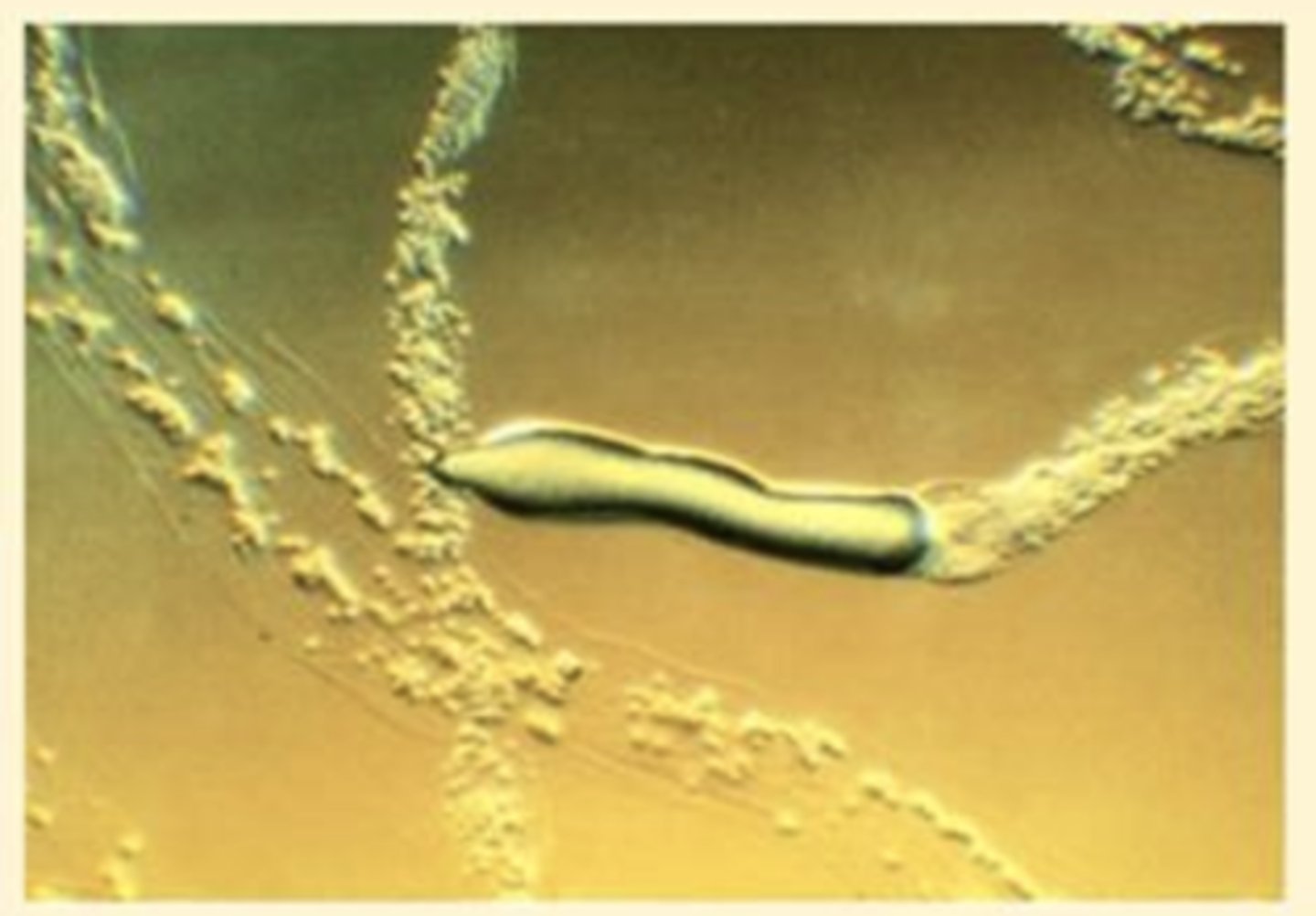Protists
1/36
There's no tags or description
Looks like no tags are added yet.
Name | Mastery | Learn | Test | Matching | Spaced |
|---|
No study sessions yet.
37 Terms
Heterokonts
group of flagellated, mostly algae/diatom species
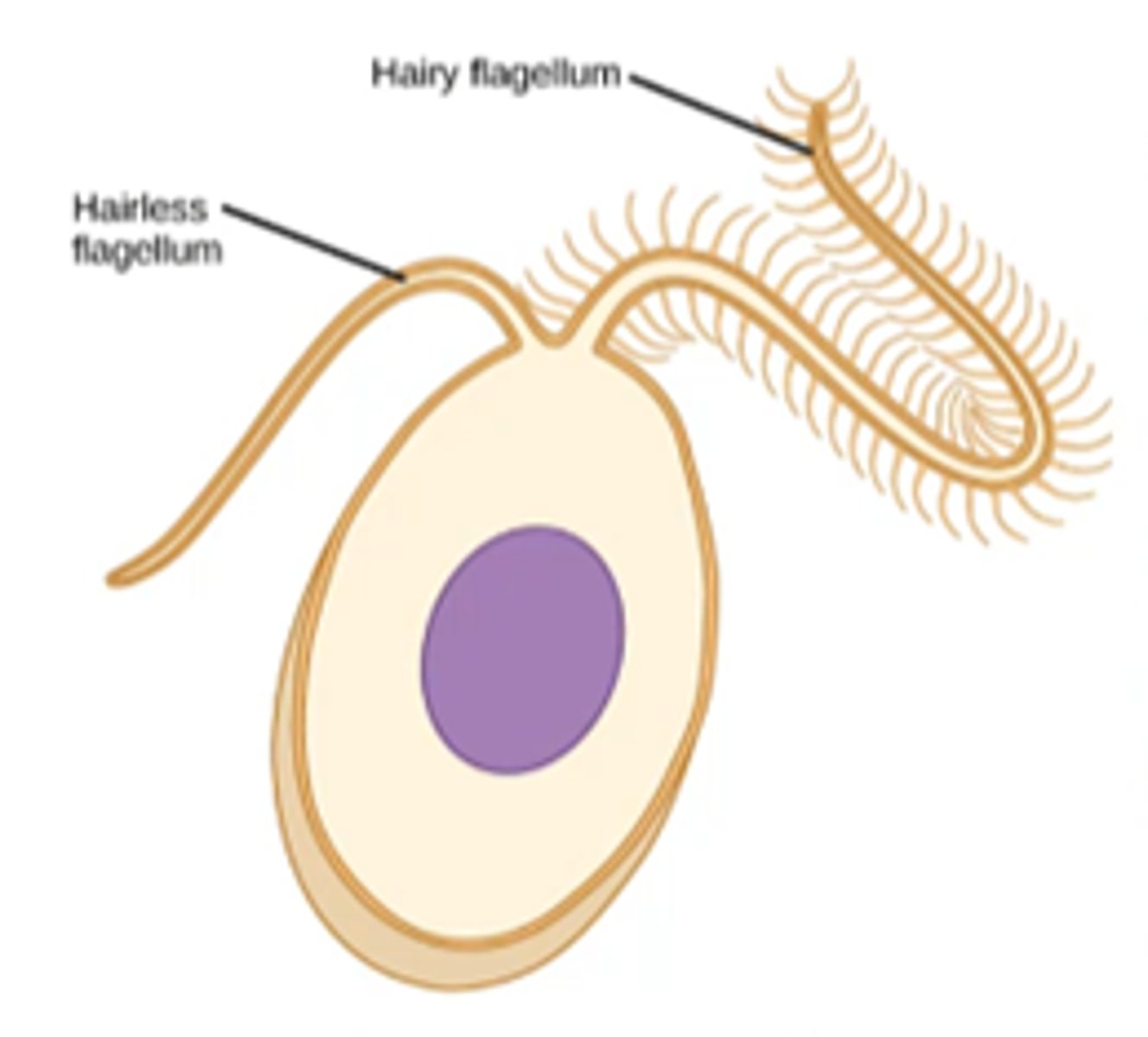
Photoplankton (phytoplankton)
photosynthetic algae+cyanobacteria found near the surface of the ocean
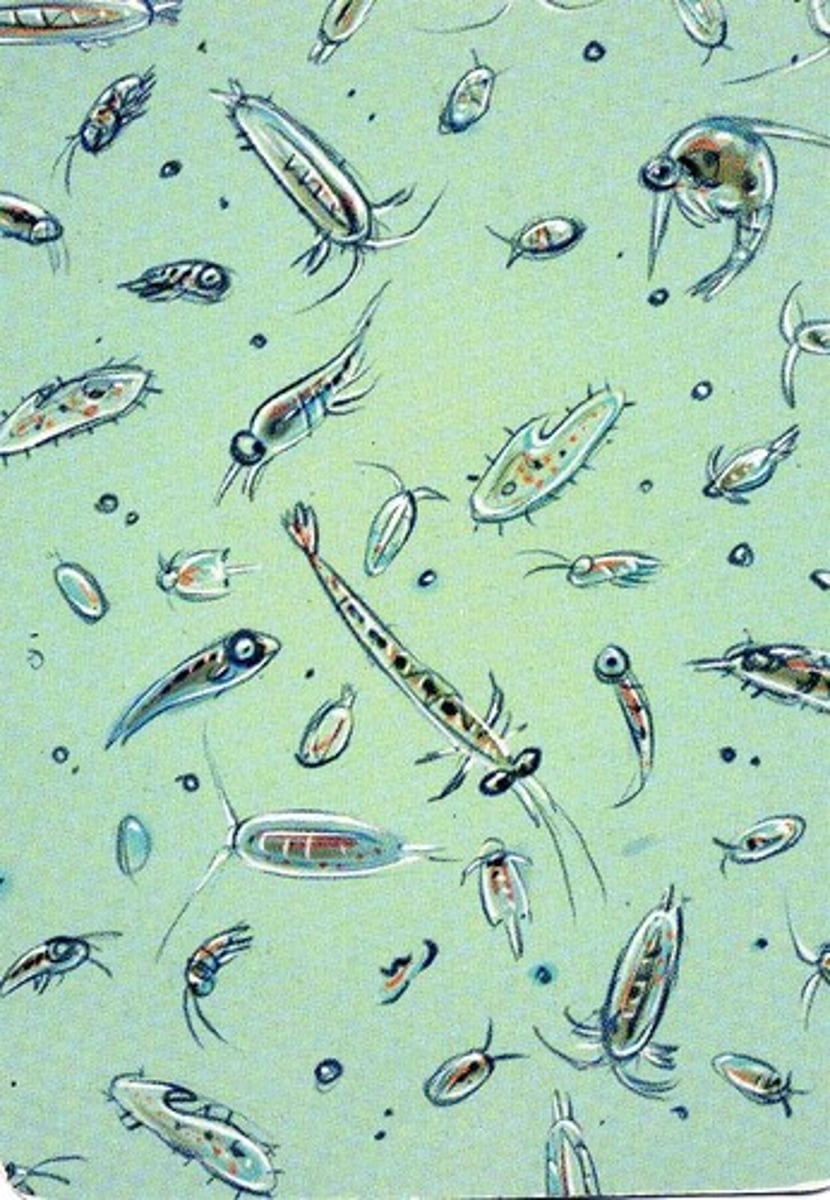
Zooplankton
microscopic animals that swim or drift near the ocean surface, feed on phytoplankton
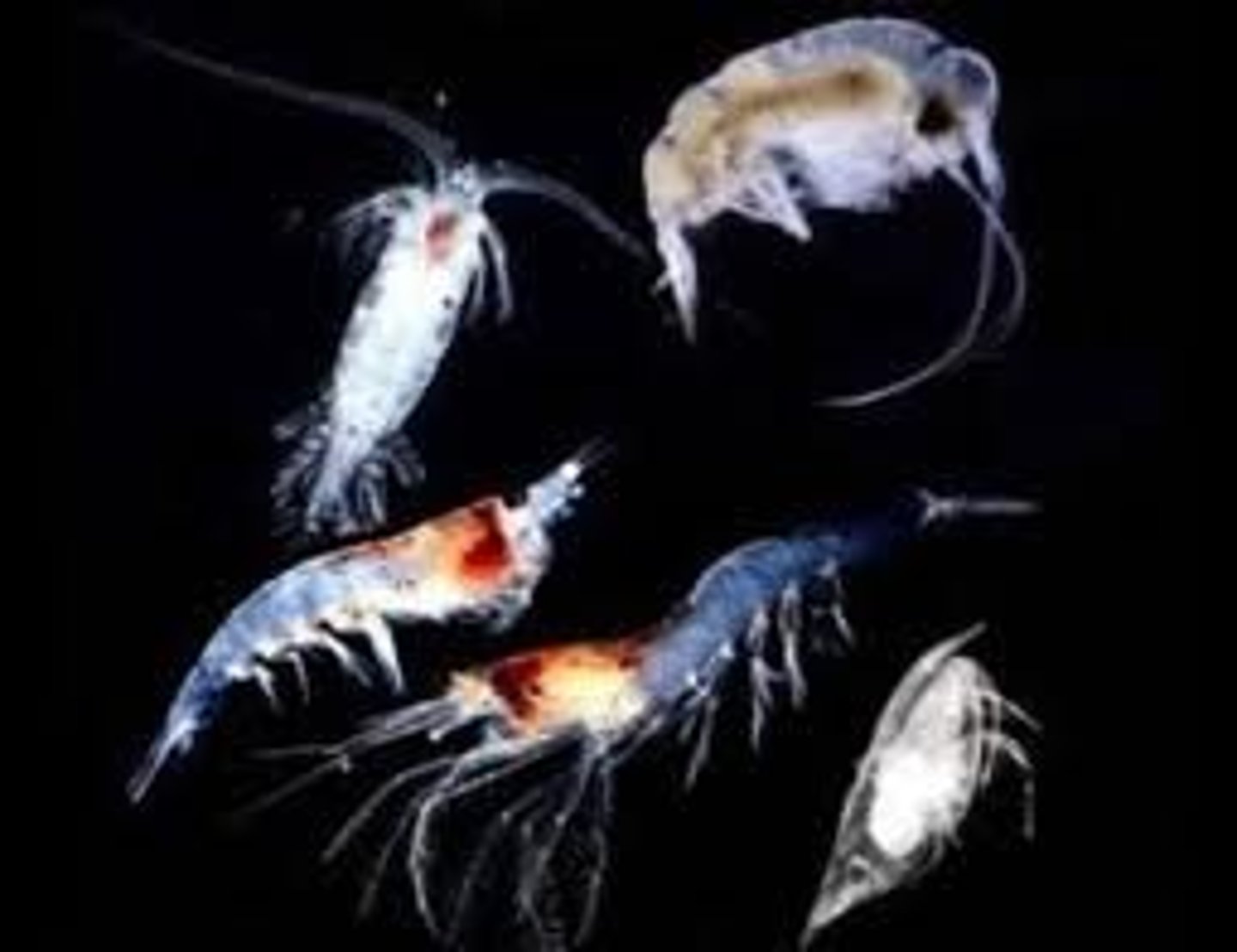
Euglenoids
biflagellate, mvmt towards flagellum, contain chloroplasts, 1/3 photosynthetic
Storage: paramylon
Pigments: a, b, carotenoids
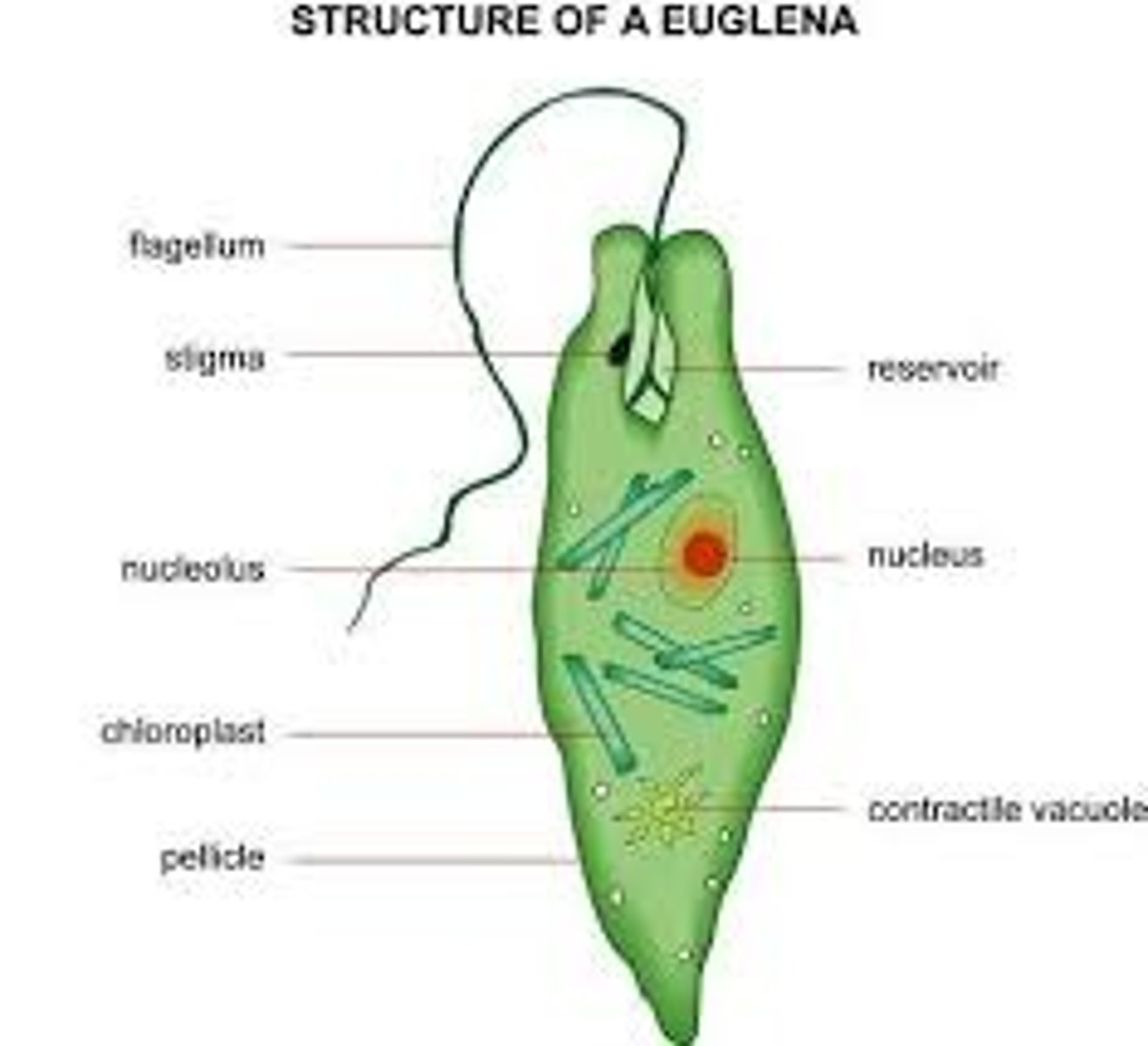
Pellicle
protein strips in spiral surrounding cell (beneath membrane)
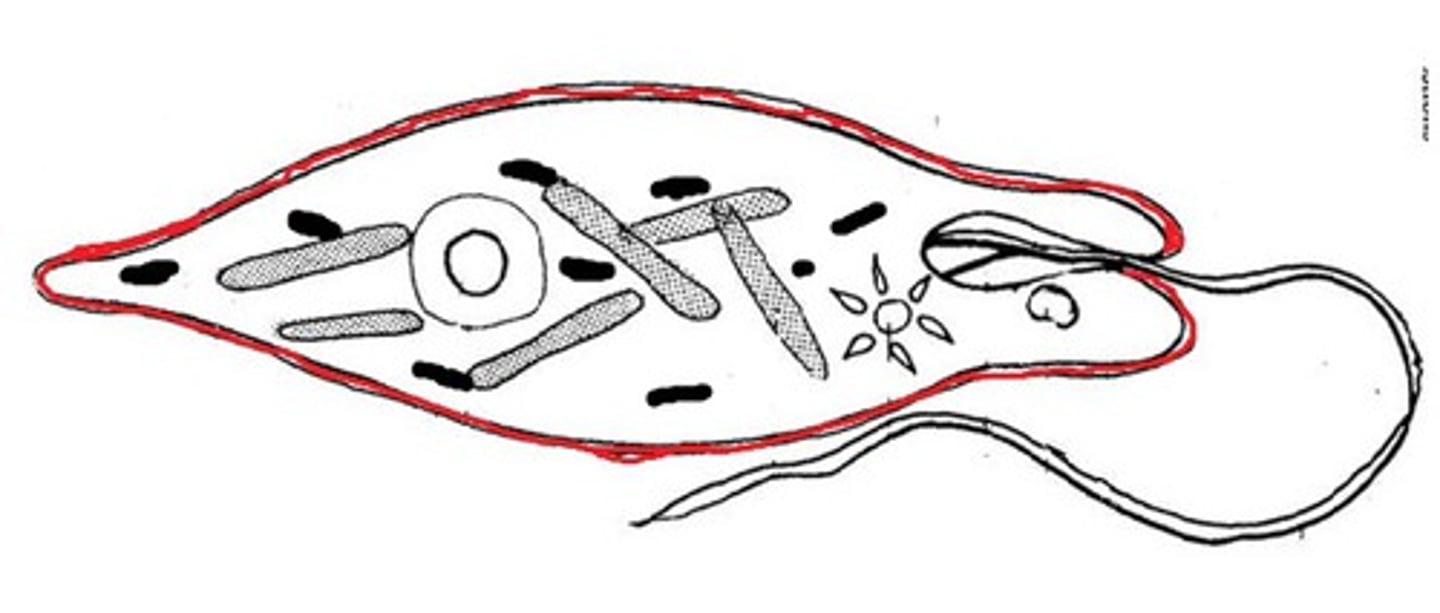
Eyespot (stigma)
(protists) detect light for optimal photosynthesis, move towards light
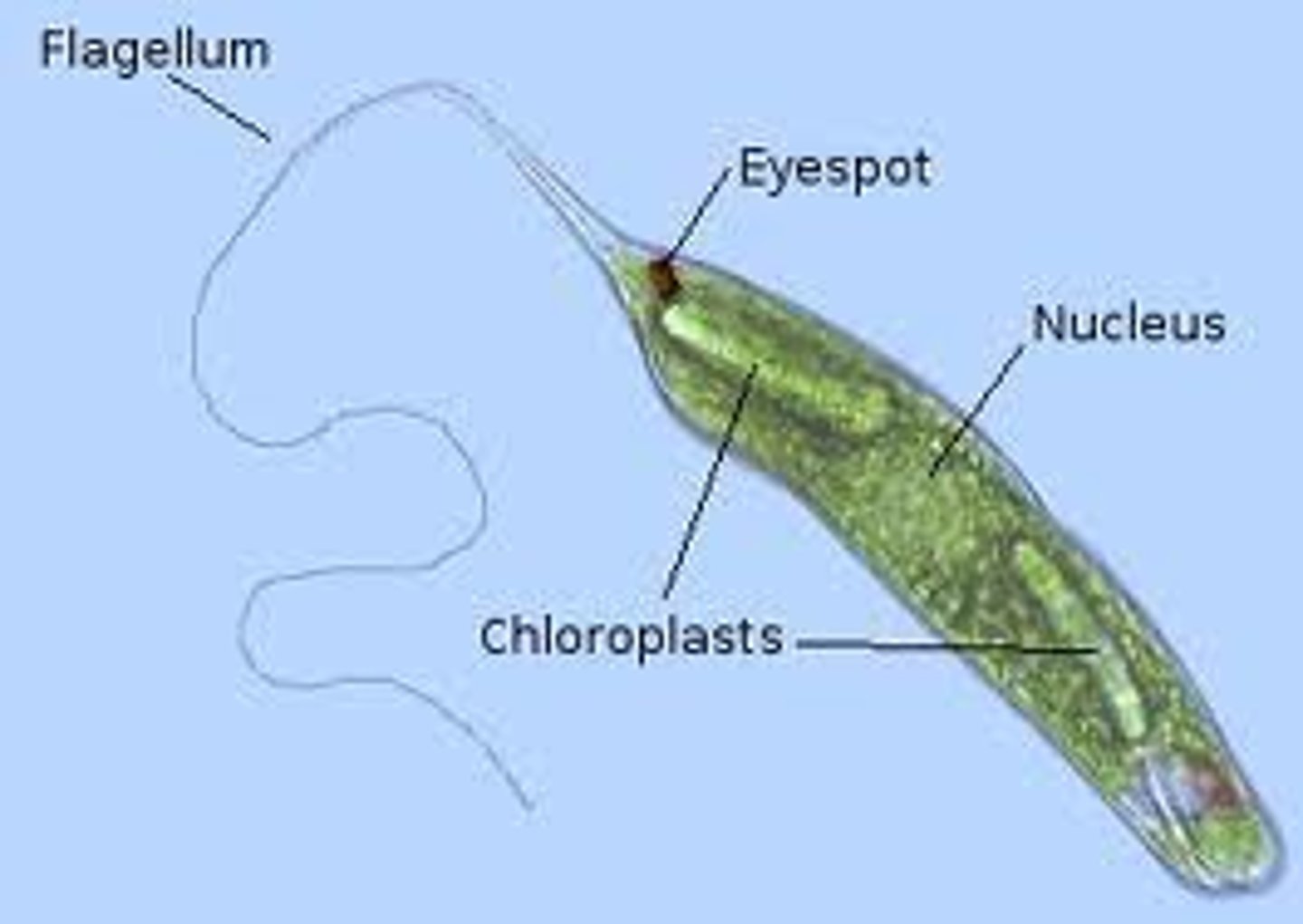
Phylum Cryptophyta (cryptomonads)
cold water, 4 membranes surrounding chloroplast w/ nucleomorph
Pigments: phycobilins
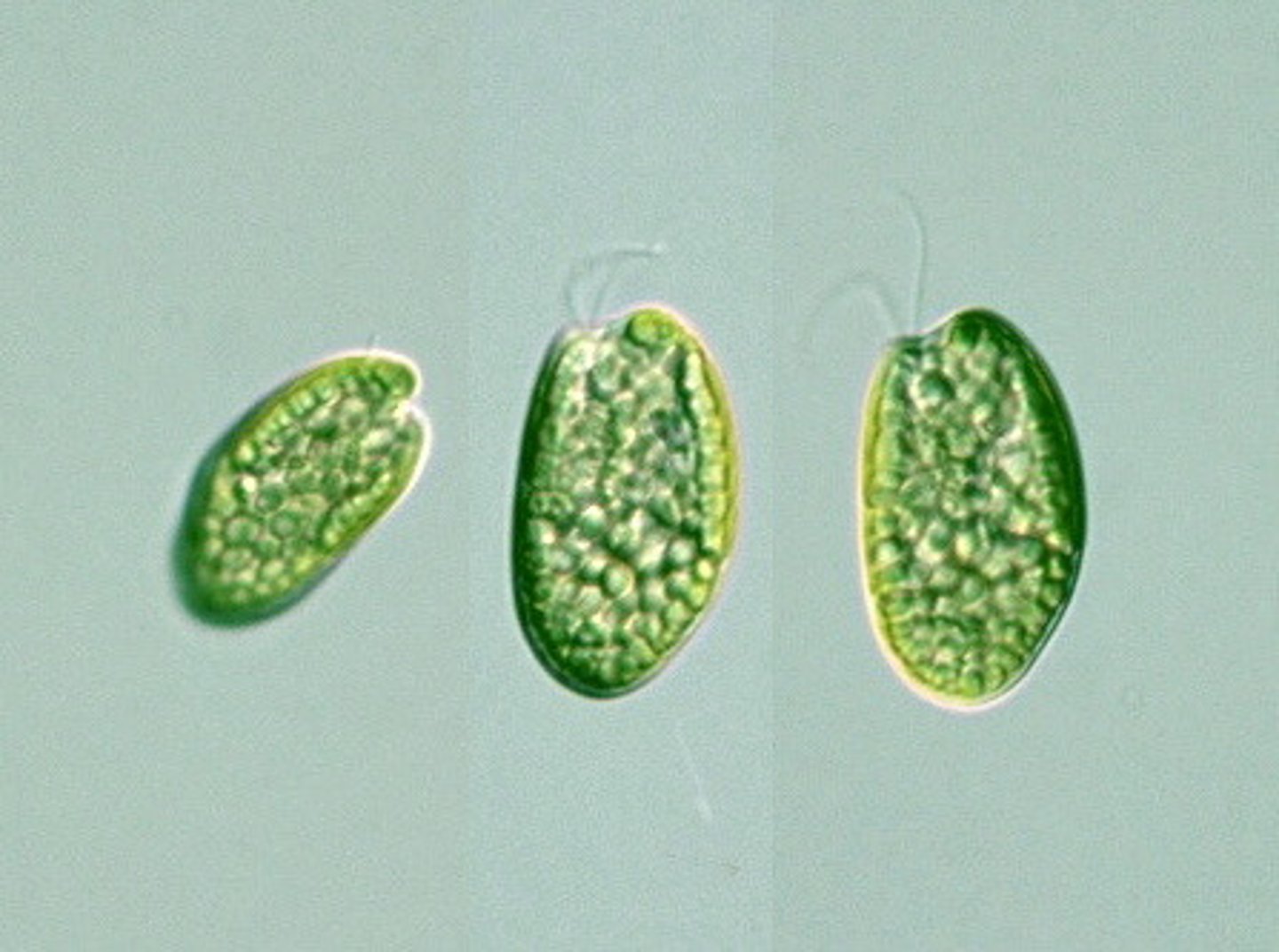
Phylum Haptophyta: Haptophytes
marine phytoplankton; have haptonema and coccoliths
Pigments: fucoxanthin
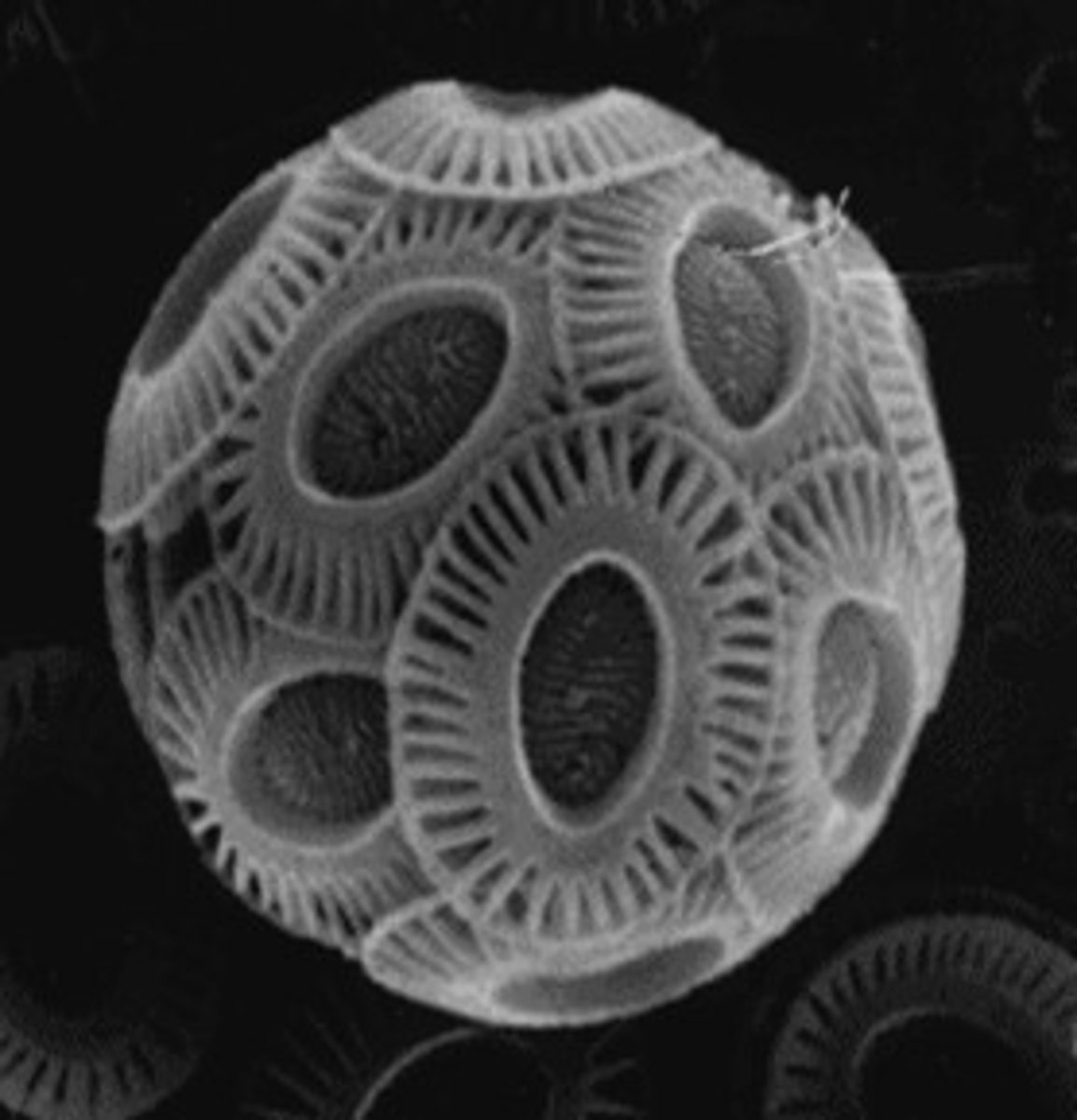
Haptonema
Extension protruding from coccolithophores that may have to do with feeding or protection.
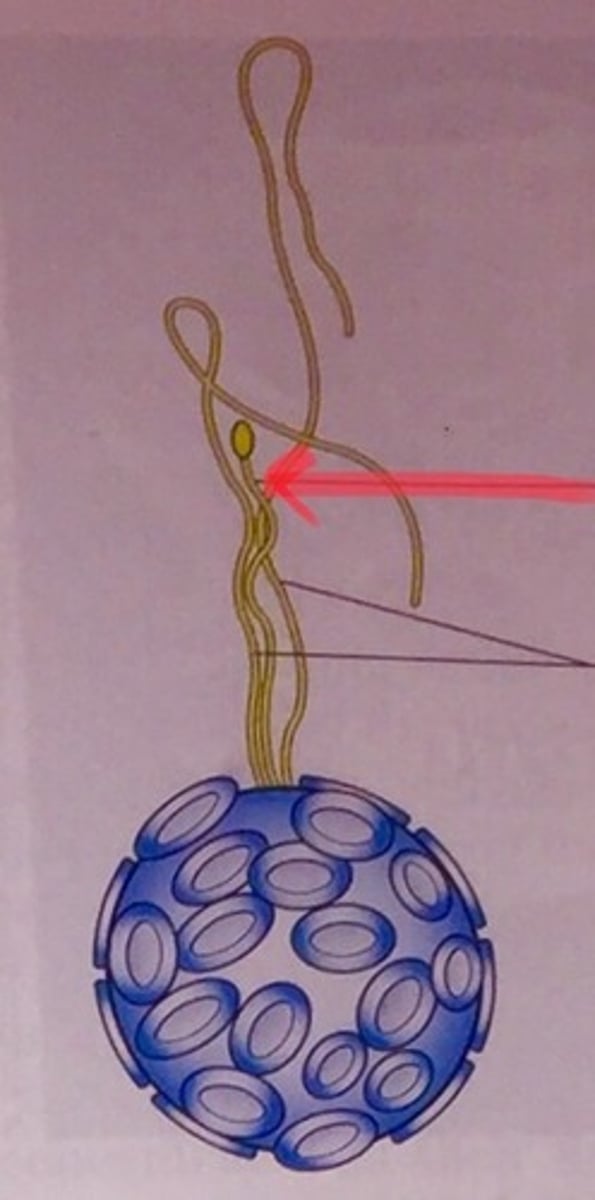
Cocoliths
calcium carbonate button like structures on members of phylum haptophyta

Dinoflagellates
plant-like protist that causes red tide and bioluminescence
biflagellate (spin like top), contain theca
Symbiote in zooxanthellae in coral
Storage: starch
Pigments: a, b, carotenoid peridinin

Class Bacillariophyceae: Diatoms
frustules like petri dish; 2 types centric (radially sym) and pennate (bi-lateral sym), make up diatomaceous earth
Storage: chrysolaminarin
Pigments: a, b, carotenoids, fucoxanthin
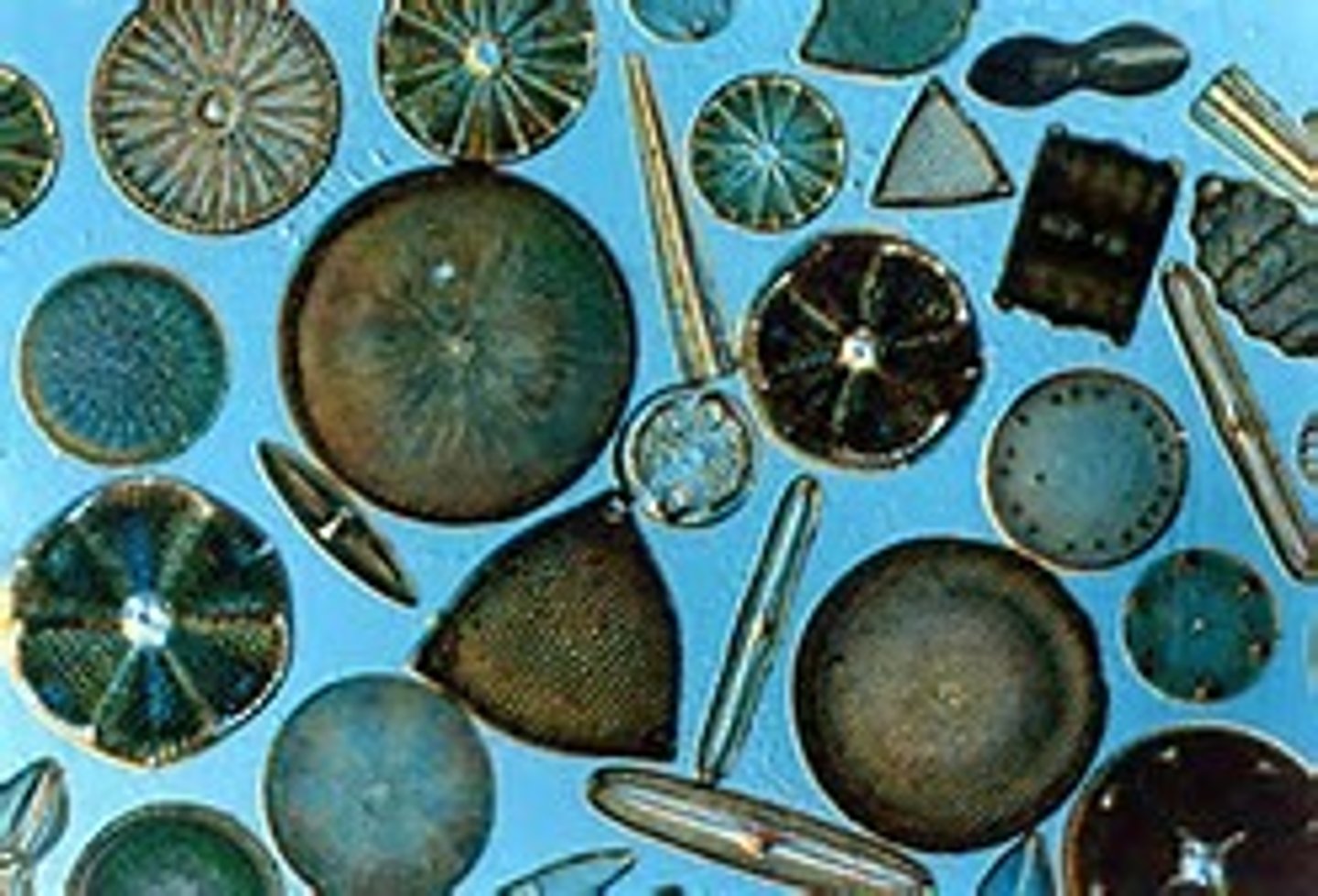
Class Chyrsophyceae: Golden Algae
freshwater photosynthetic organisms
Storage: chrysolaminarin
Pigments: fucoxanthin
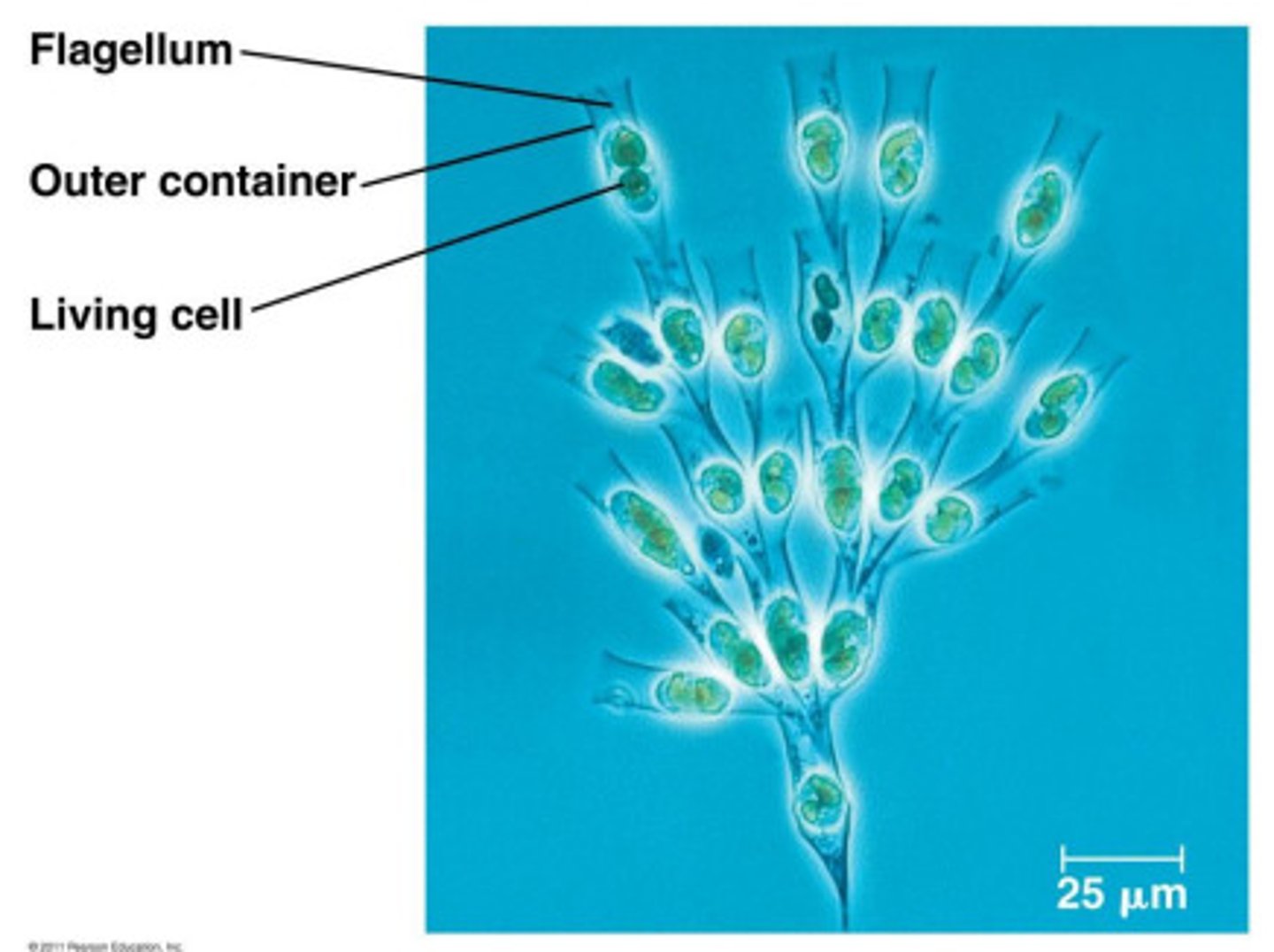
Class Xanthophyceae (yellow-green algae)
fresh water, non motile, cell walls have cellulose
Storage: oil
Pigments: a, c
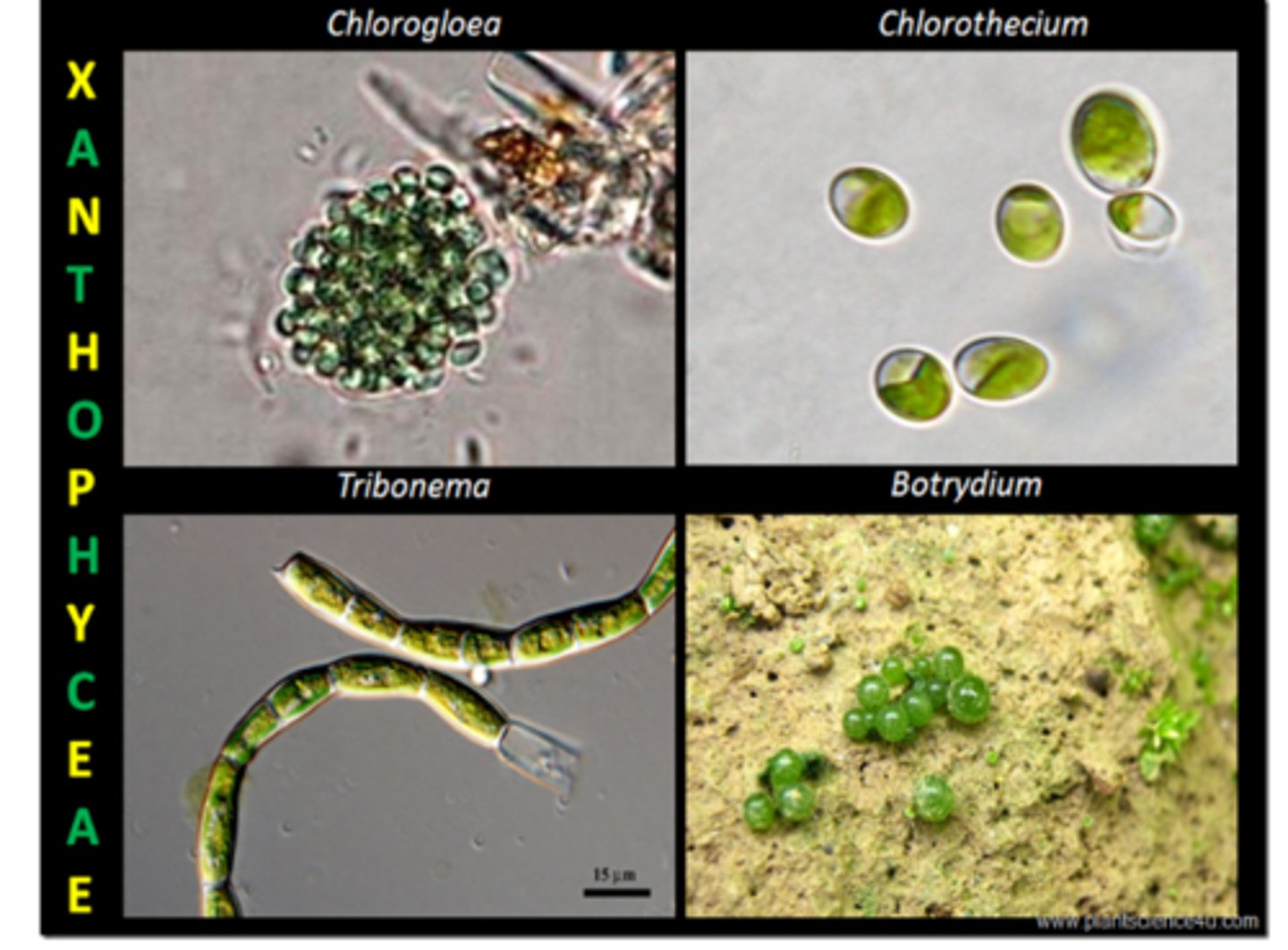
Class Phaeophyceae (brown algae)
big kelps! cold marine shores, contain holdfast, stipe, blade, floats, source of algin
Storage: laminarin, mannitol
Pigments: a, c, fucoxanthin
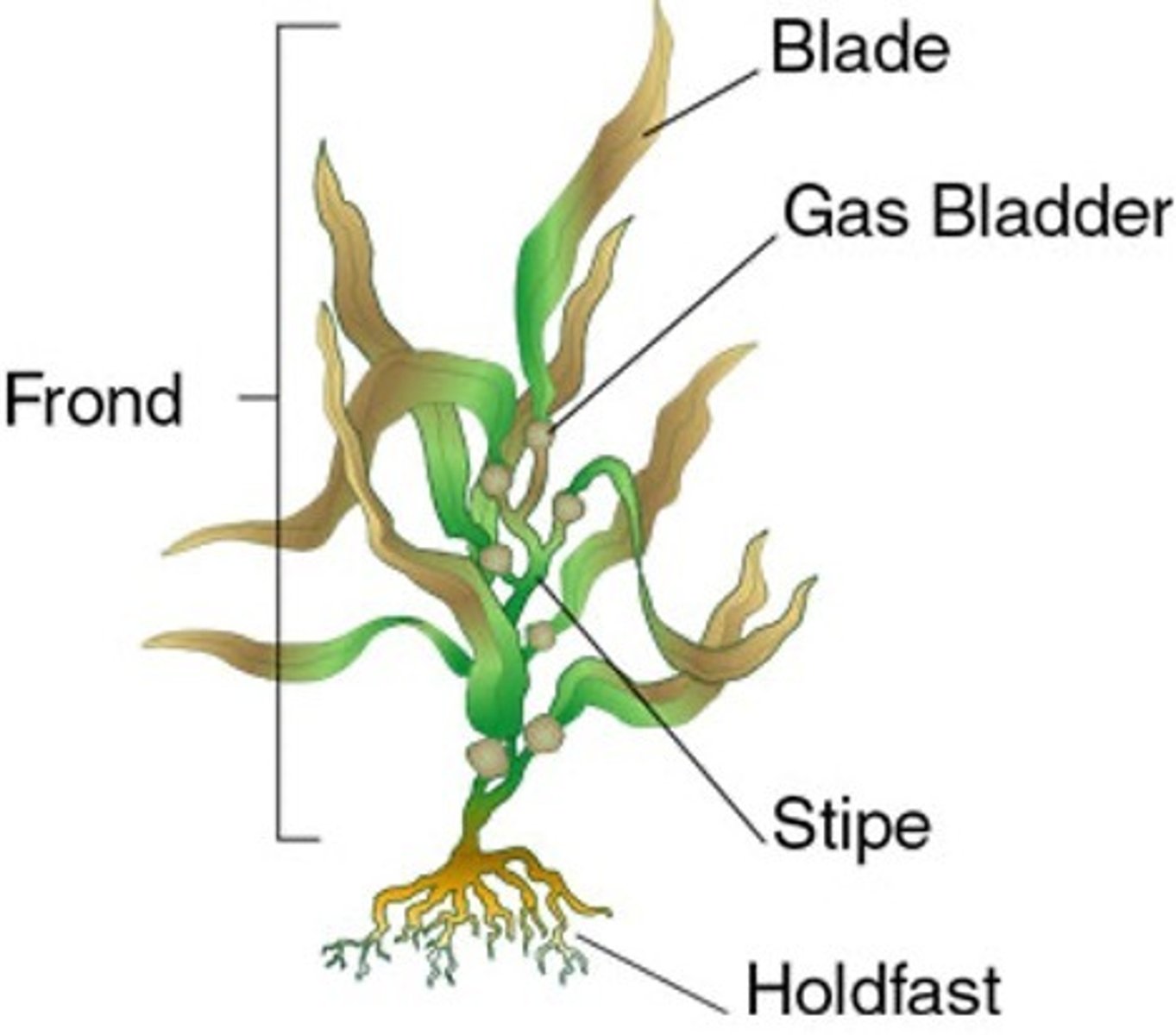
Phylum Rhodophyta: Red Algae
tropical marine seaweeds, nori
cell walls contain agar and carrageenans, can store CaCO3
Storage: floridean starch
Pigments: phycobilin

Phylum Chlorophyta: Green Algae
mostly freshwater, unicellular or multicellular colonial sheets or spheres
most closely related to plants
Storage: starch
Pigments: chlorophyll a+b
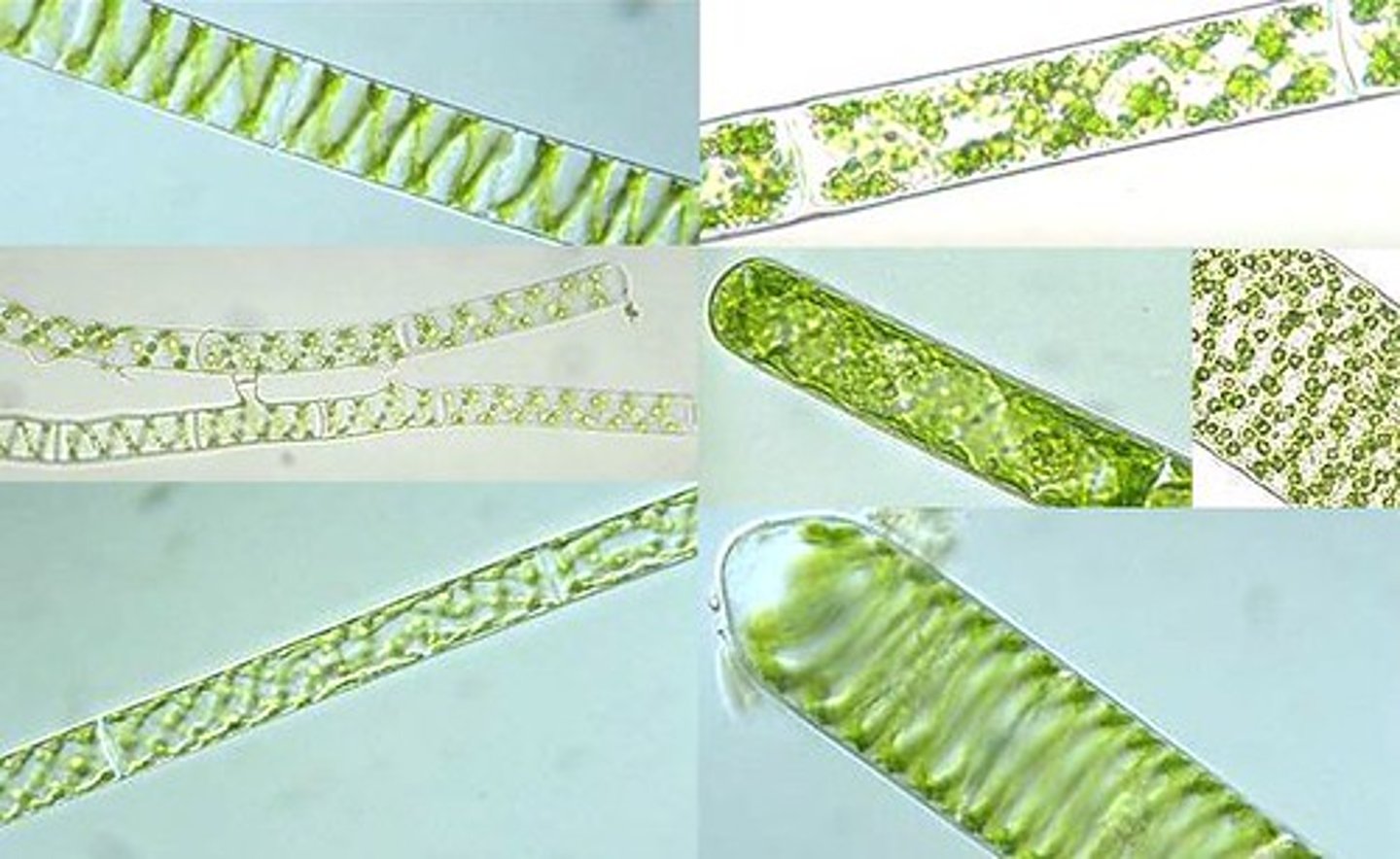
Green Algae: Class Chlorophyceae
mitotic spindle replaced by microtubules of phycoplast (microtubule part of cytokinesis)
Contains: Chlamydomonas, volvox, hydrodictyon
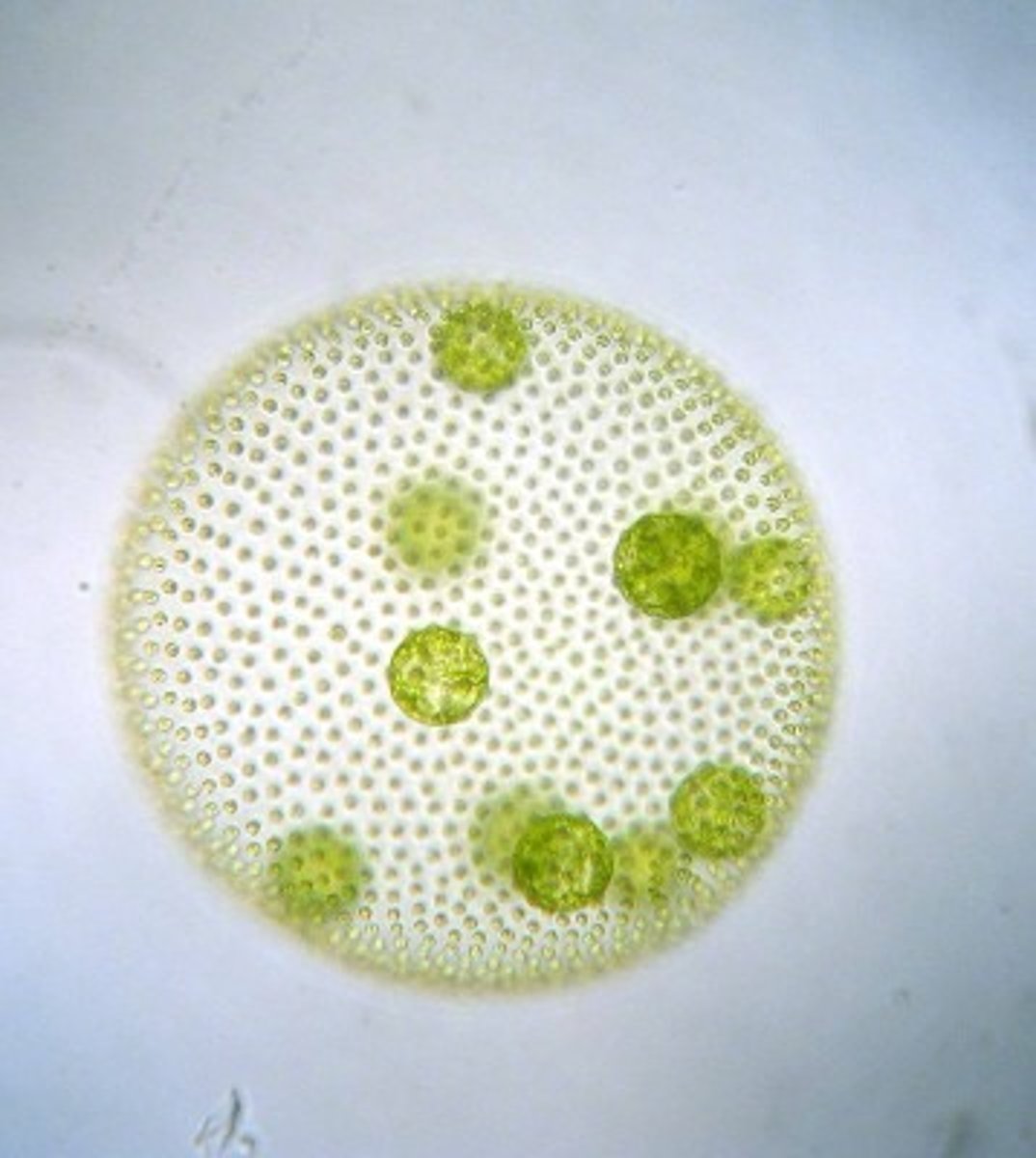
Green Algae: Class Ulvophyceae
spindle persists during mitosis
Contains: ulva, codium
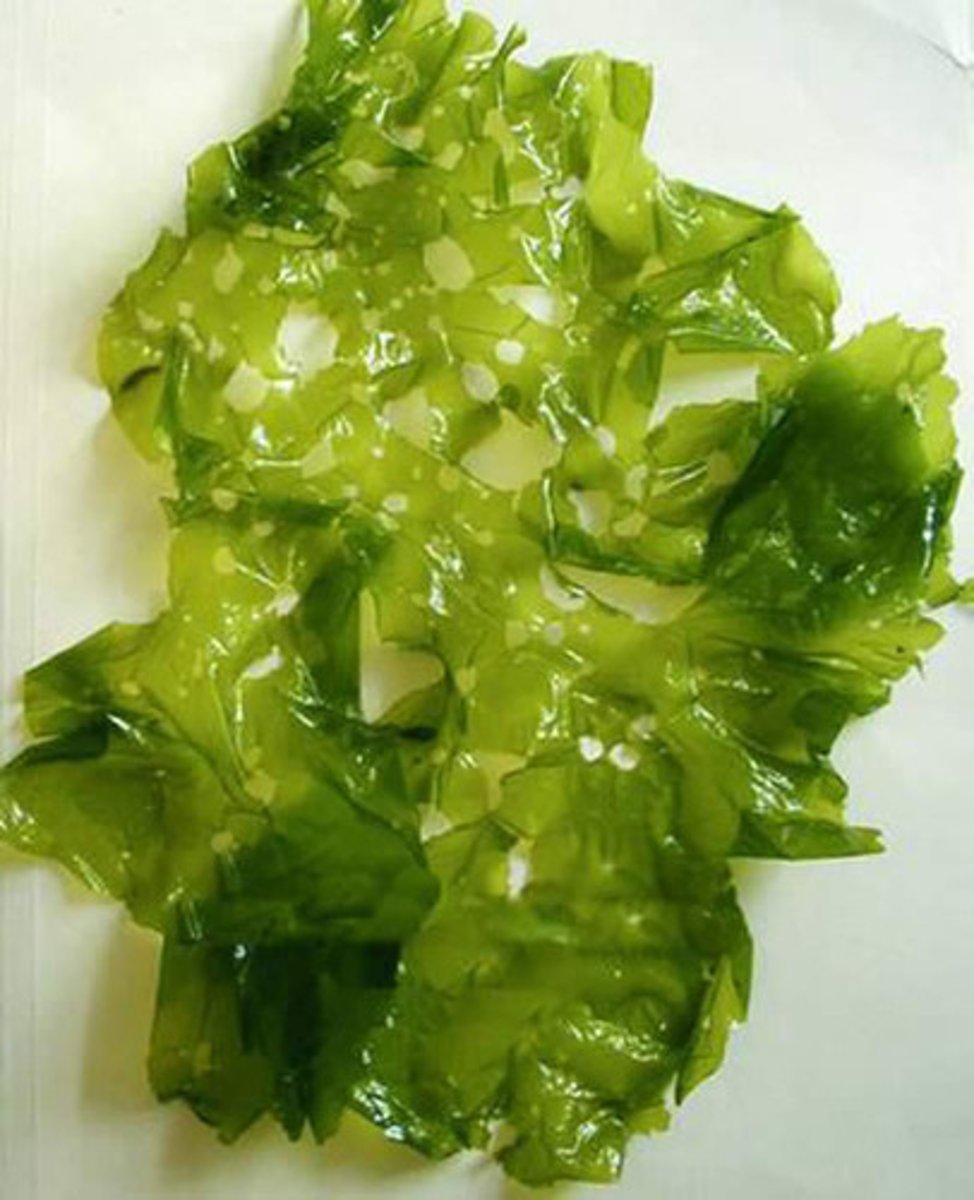
Green Algae: Class Charophyceae
persistent spindle but forms phragmoplast (microtubule scaffold for late cytokinesis); closest related to plants
Contains: spirogyra, desmids, coleochaetes, chara
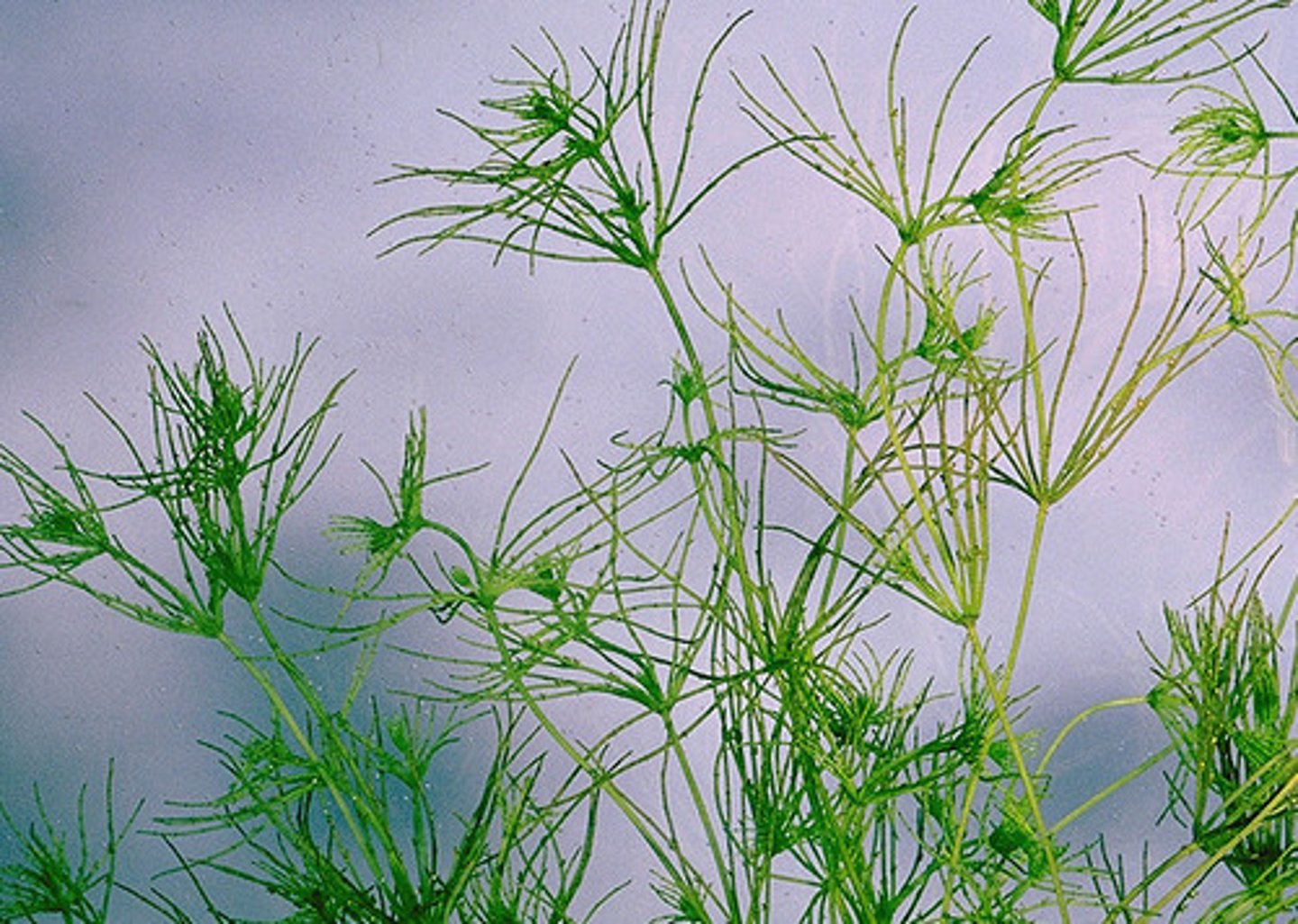
Chlamydomonas
(Chlorophyceae)
freshwater, unicellular, motile, contains eyespot, nucleus, 2 flagella, large crescent chloroplast w/ pyrenoid
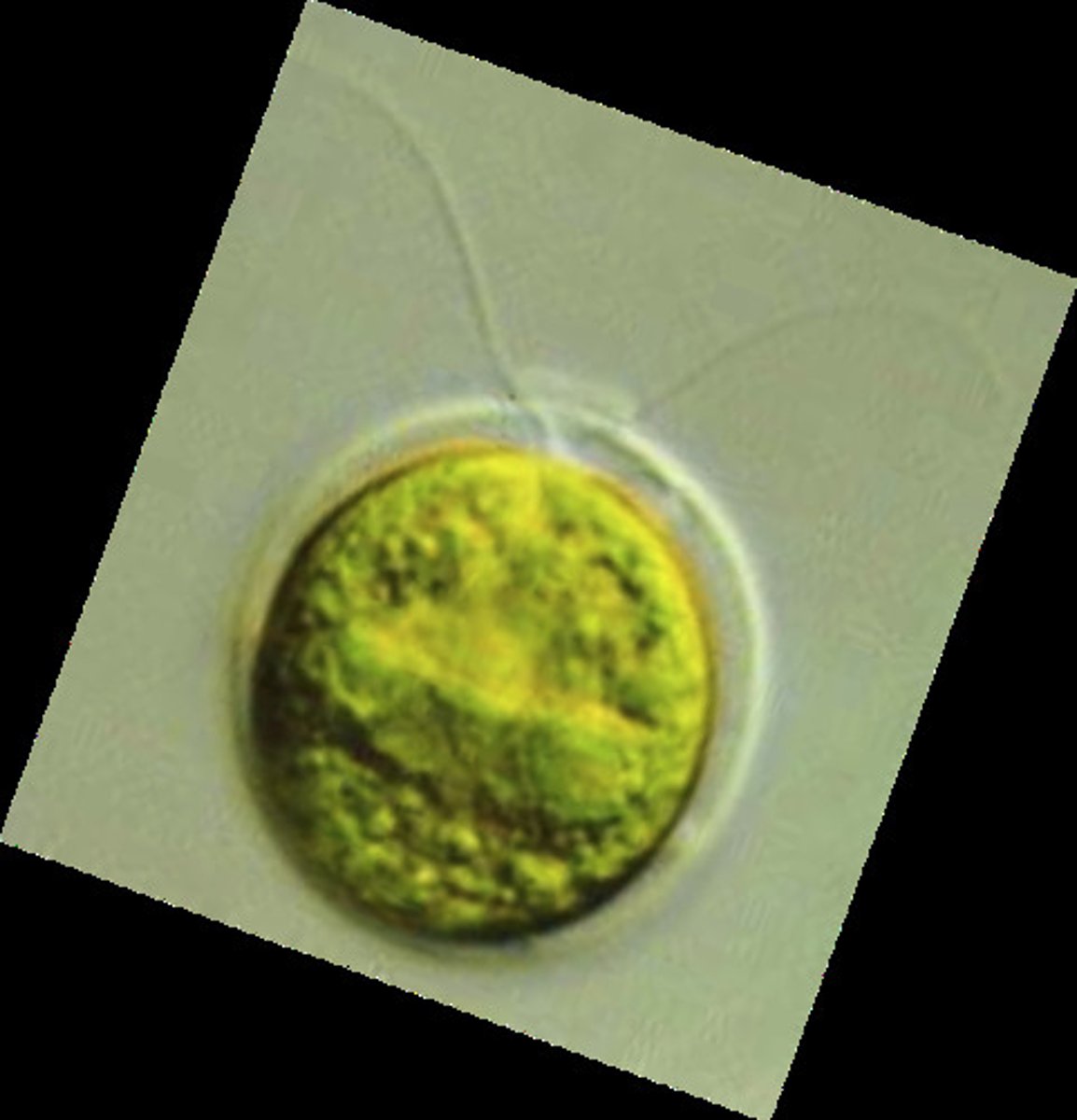
Volvox
(Chlorophyceae)
motile, fresh water hollow sphere colony with daughter colonies; each cell is biflagellate, like Chlamydomonas
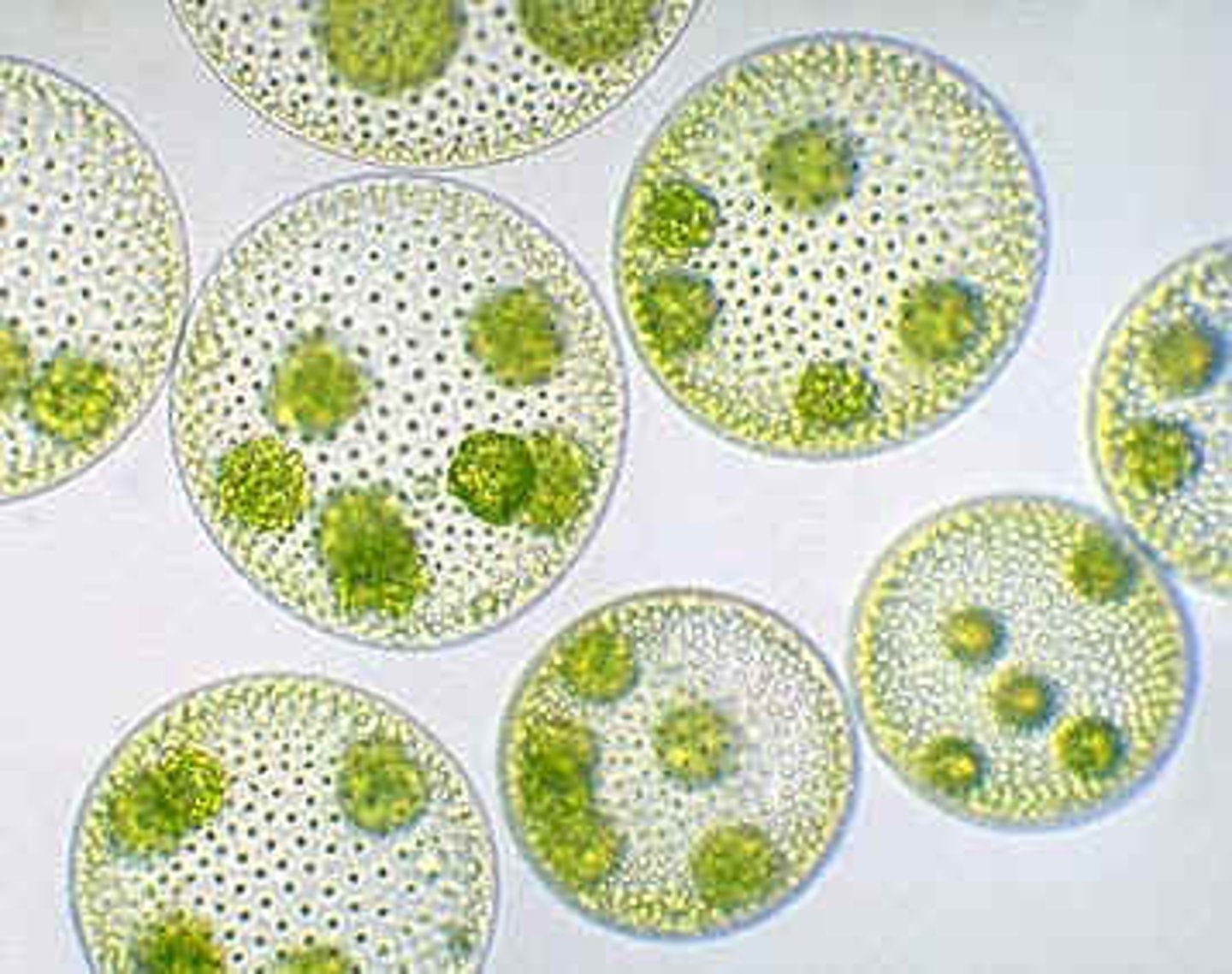
Hydrodictyon
(cholophyceae)
AKA water net, hollow cylinders with reticulate chloroplasts
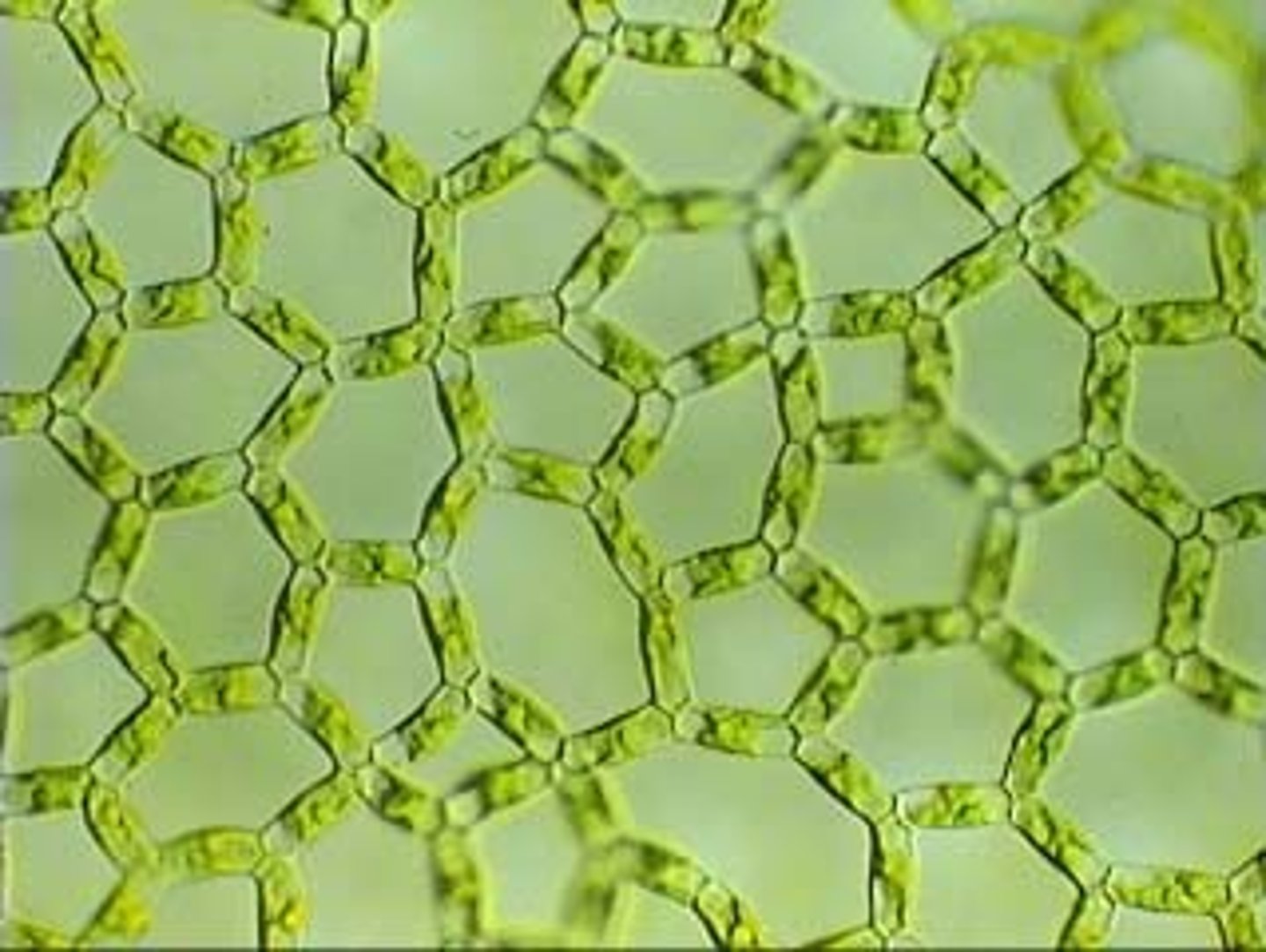
Ulva (sea lettuce)
(Ulvophyceae)
nonmotile, multicellular flat thallus w/ modified 'holdfast'
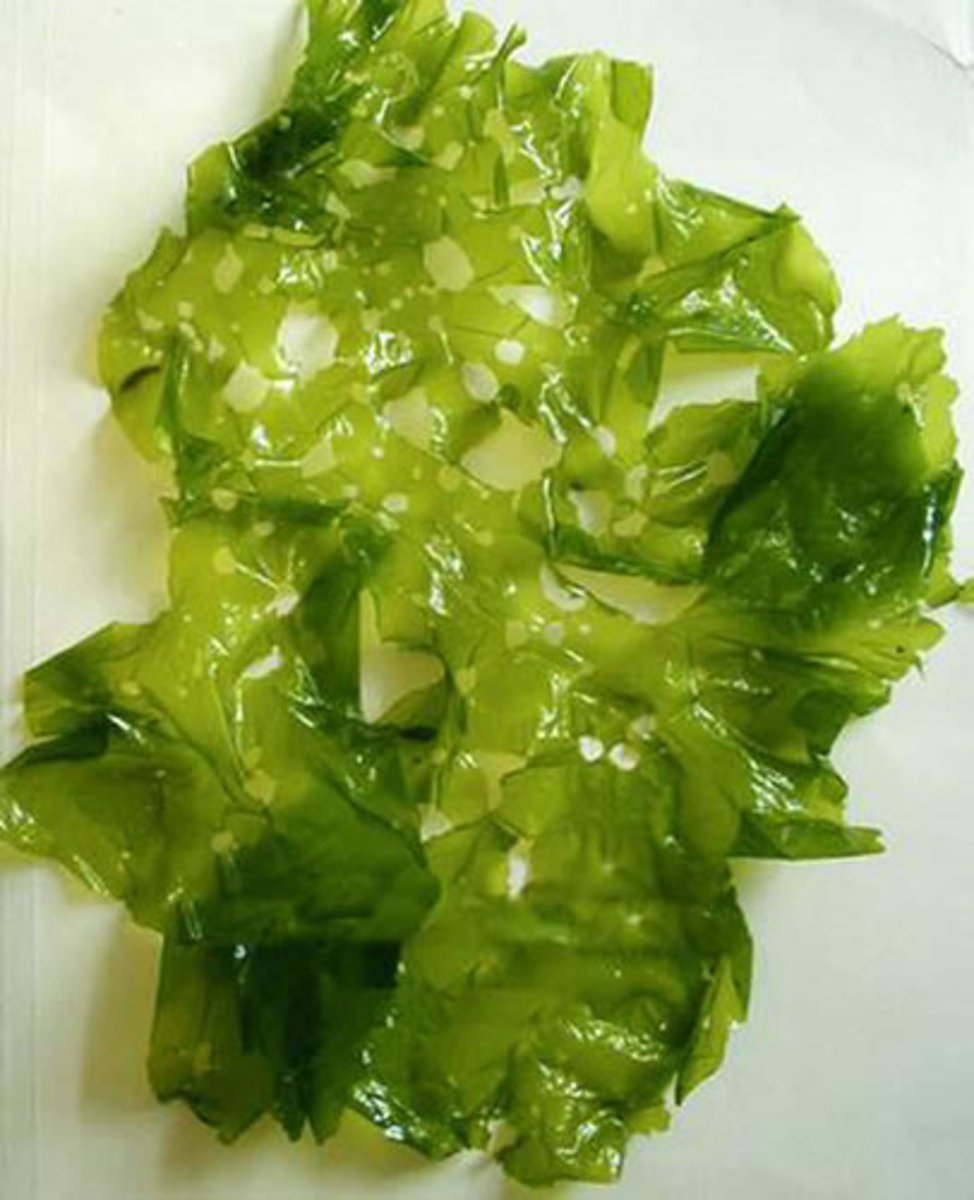
Codium
(Ulvophyceae)
rope-like branched filaments
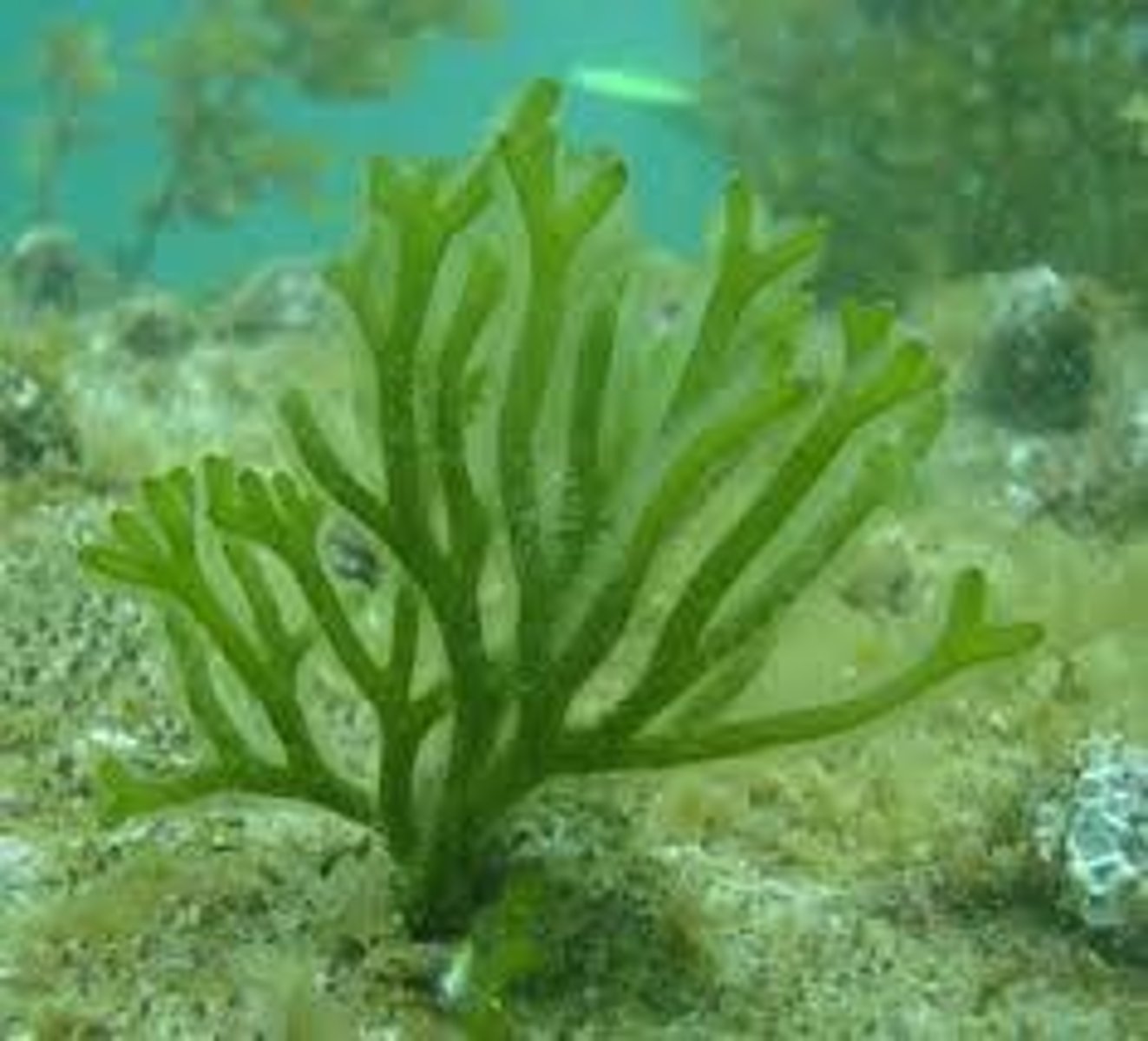
Spirogyra
(Charohyceae)
colonial filaments; spiraling chloroplast with pyrenoids, nucleus and cellulose cell walls
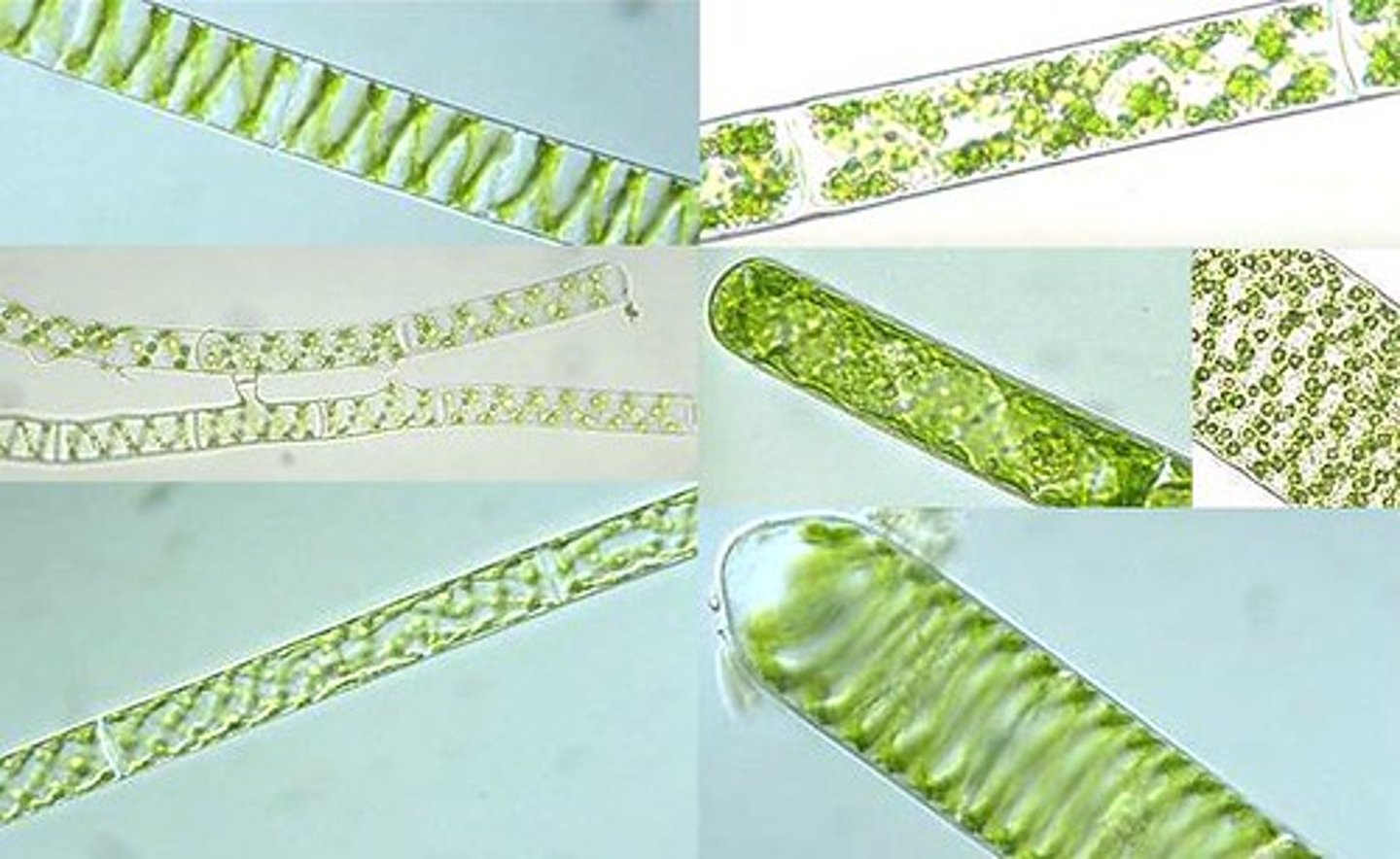
Desmids
(Chlorophyta)
fresh water, 2 sections each form crazy shapes
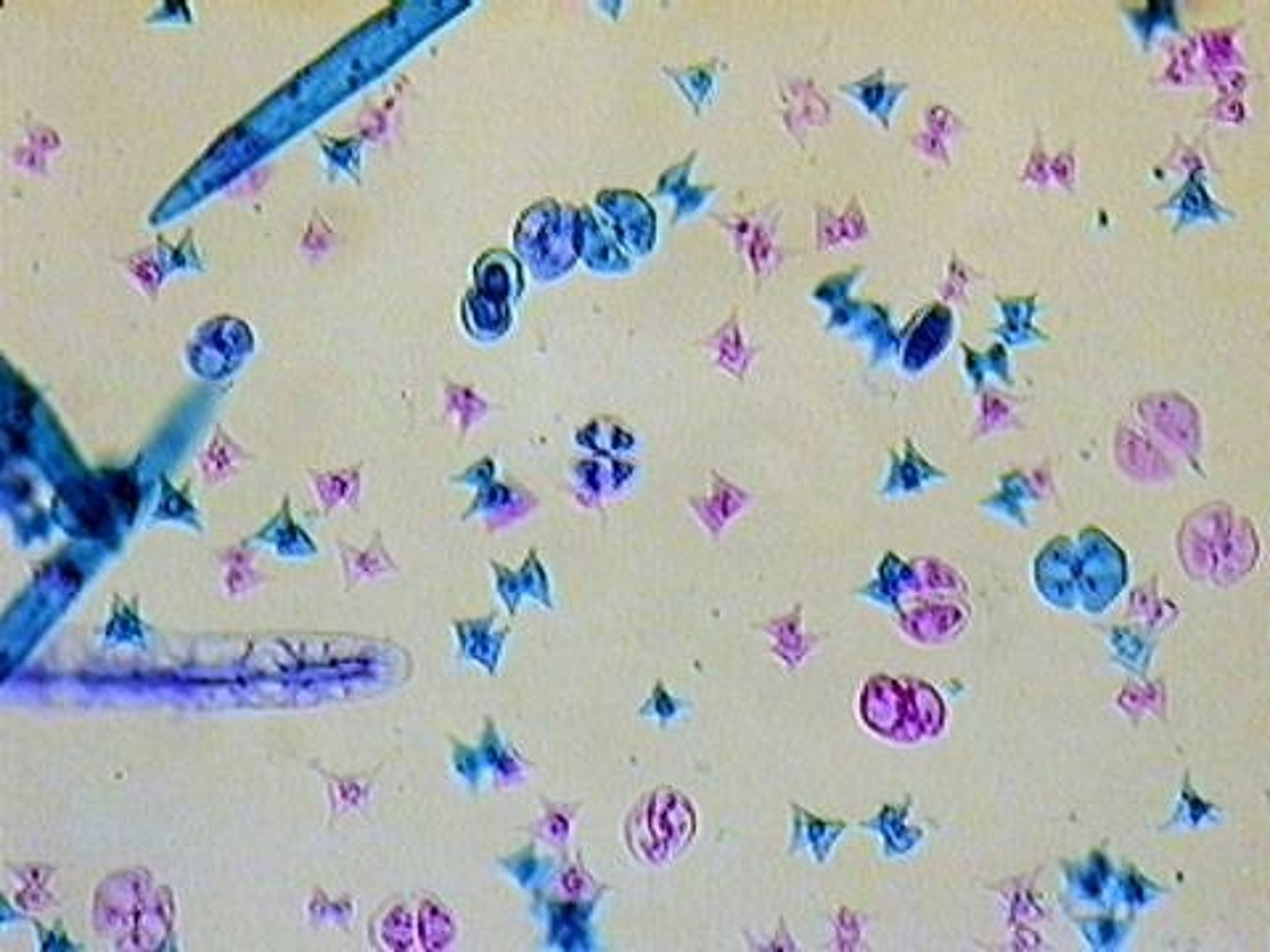
Coleochaetes
(Charophyceae)
disc shaped multicellular with plasmodesmata
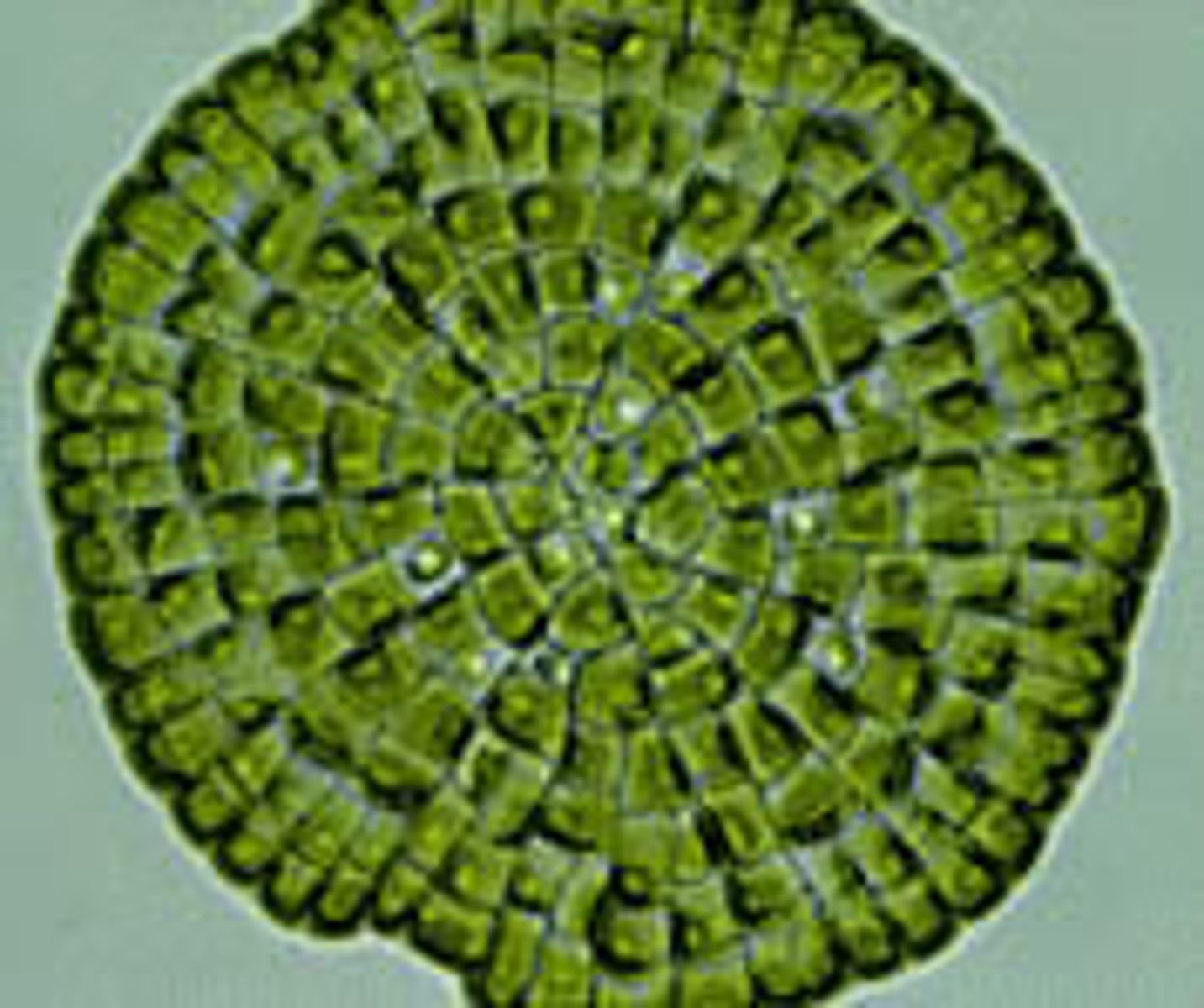
Chara
(Charophyceae)
fresh water, apical growth thallus with nodes and whorls of branches
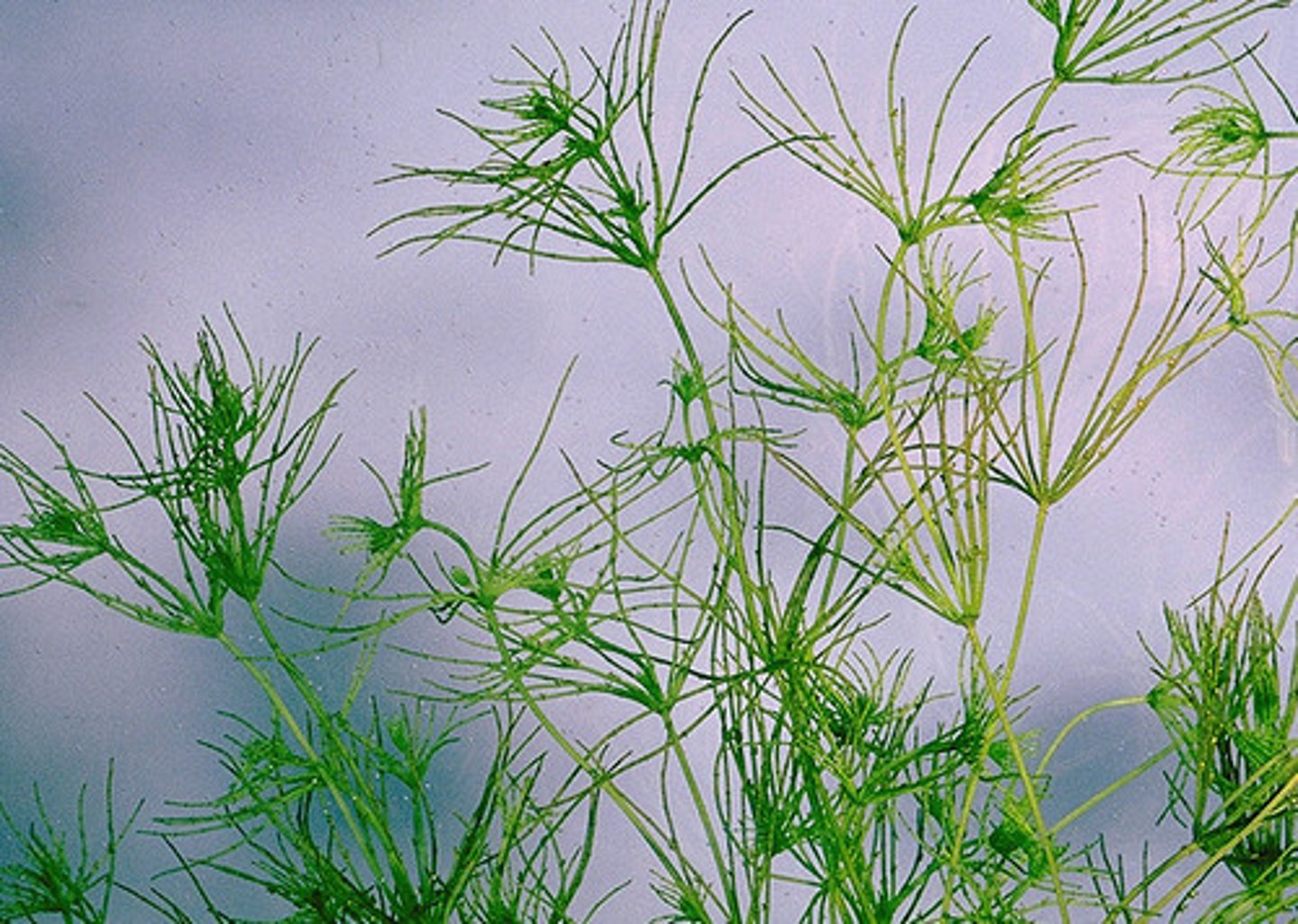
Oomycota (oomycetes)
Either "water molds" growing as mass of filaments (aka saprolgenia) or terrestrial plan pathogens (potato blight)

Saprolegnia
Water Molds: not a fungus but looks and behaves like one
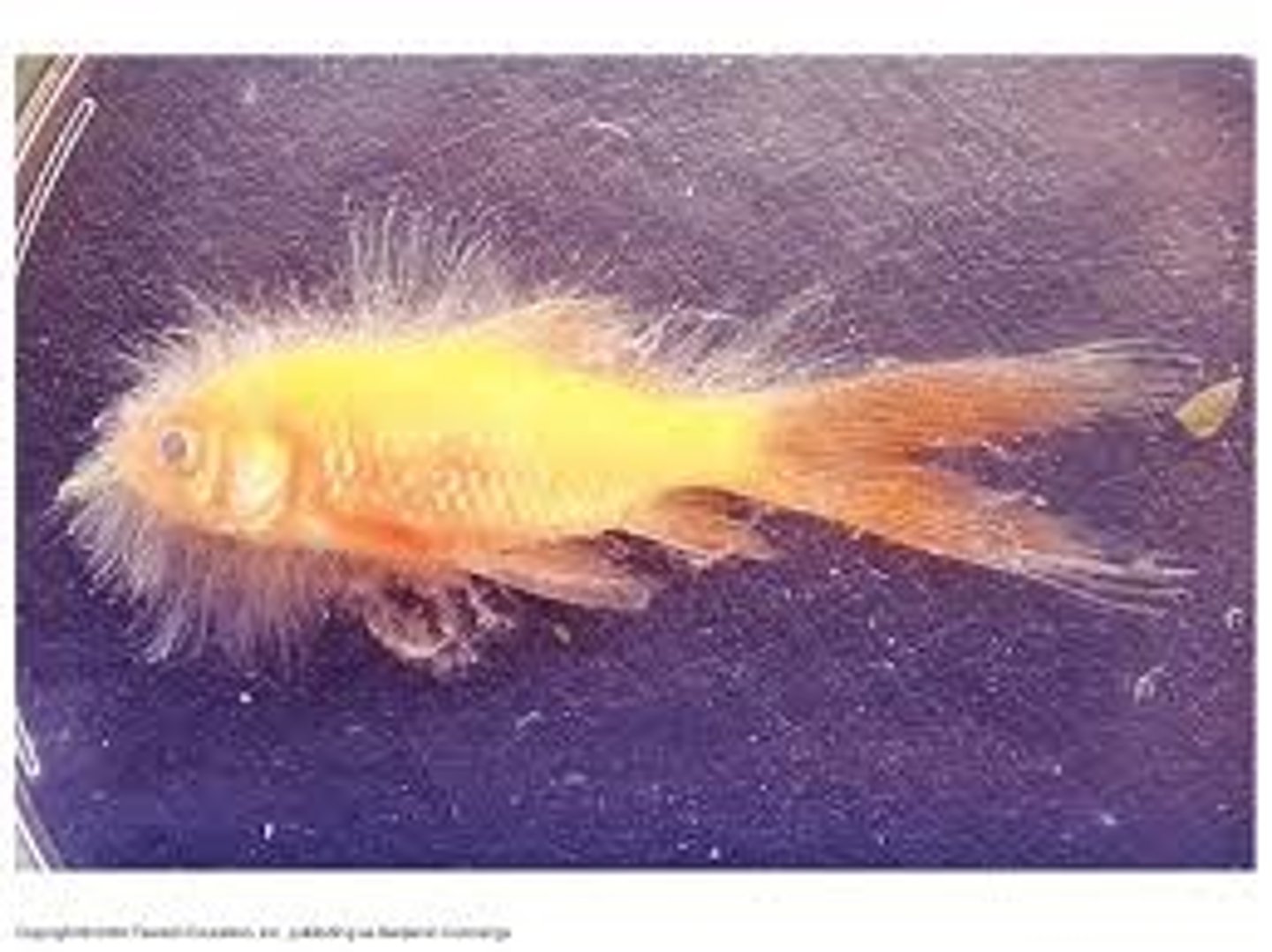
Myxomycota (plasmodial slime molds)
exists in two forms:
Plasmodium (favorable) and sporangia (unfavorable)
Plasmodium
(favorable conditions form of plasmodial slime molds) multinucleate mass of protoplasm
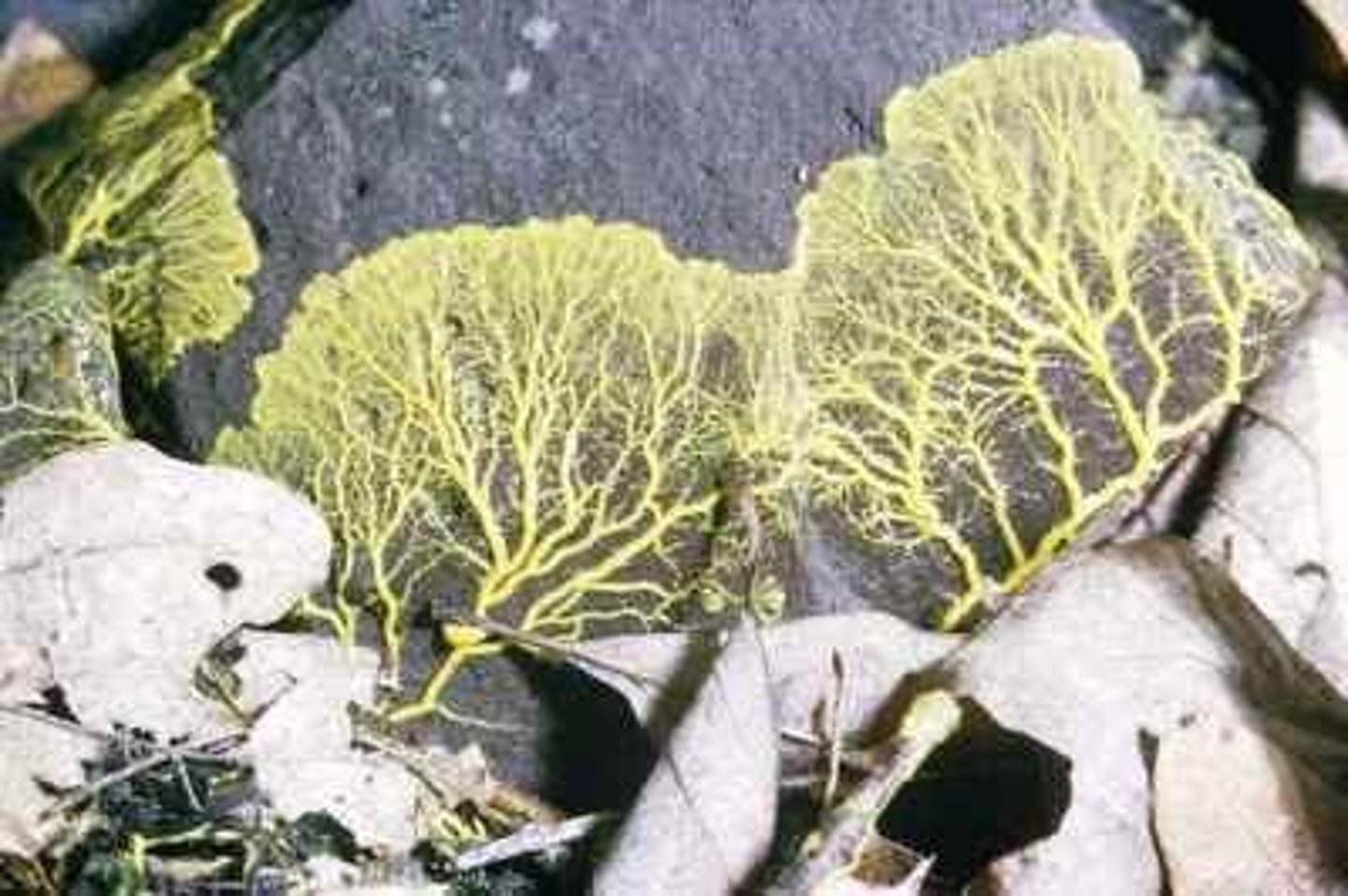
Sporangia
(unfavorable conditions form of plasmodial slime molds)
produce spores
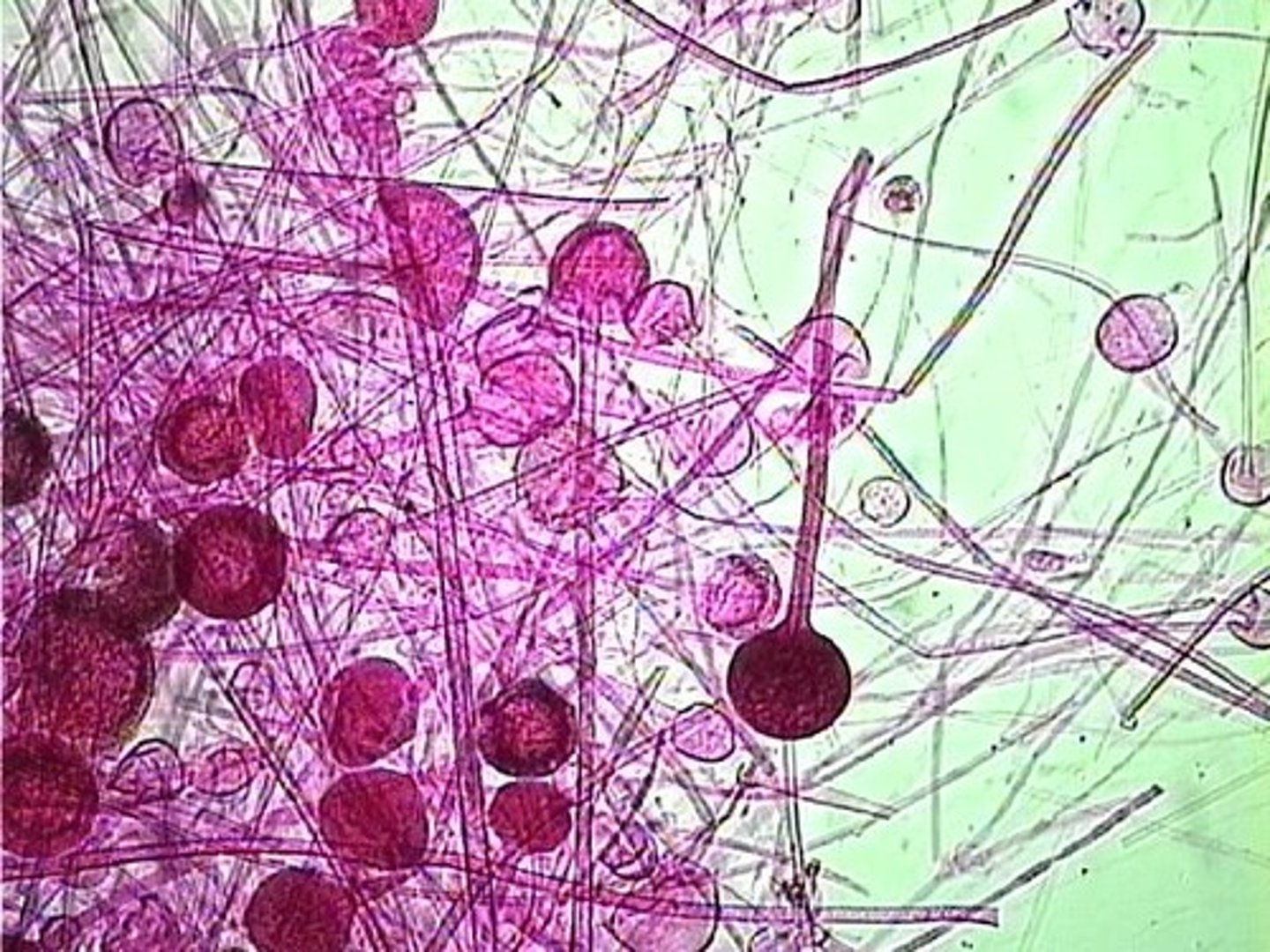
Dictyosteliomycota (cellular slime molds)
exists in two forms:
myxamoebas (favorable) and pseudoplasmodium (unfavorable)
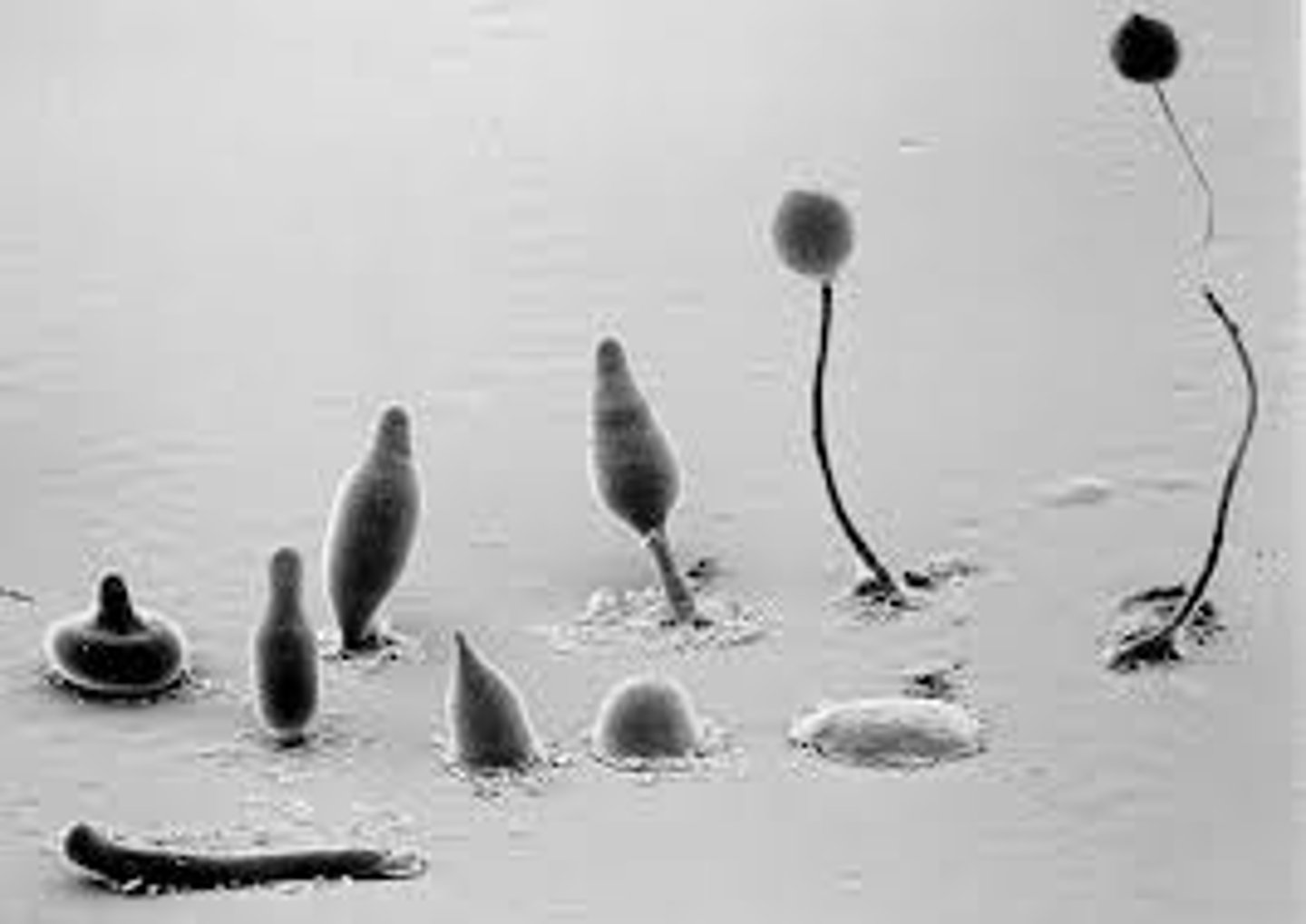
Myxamoebas
An independent, unicellular, haploid life stage of cellular slime molds.
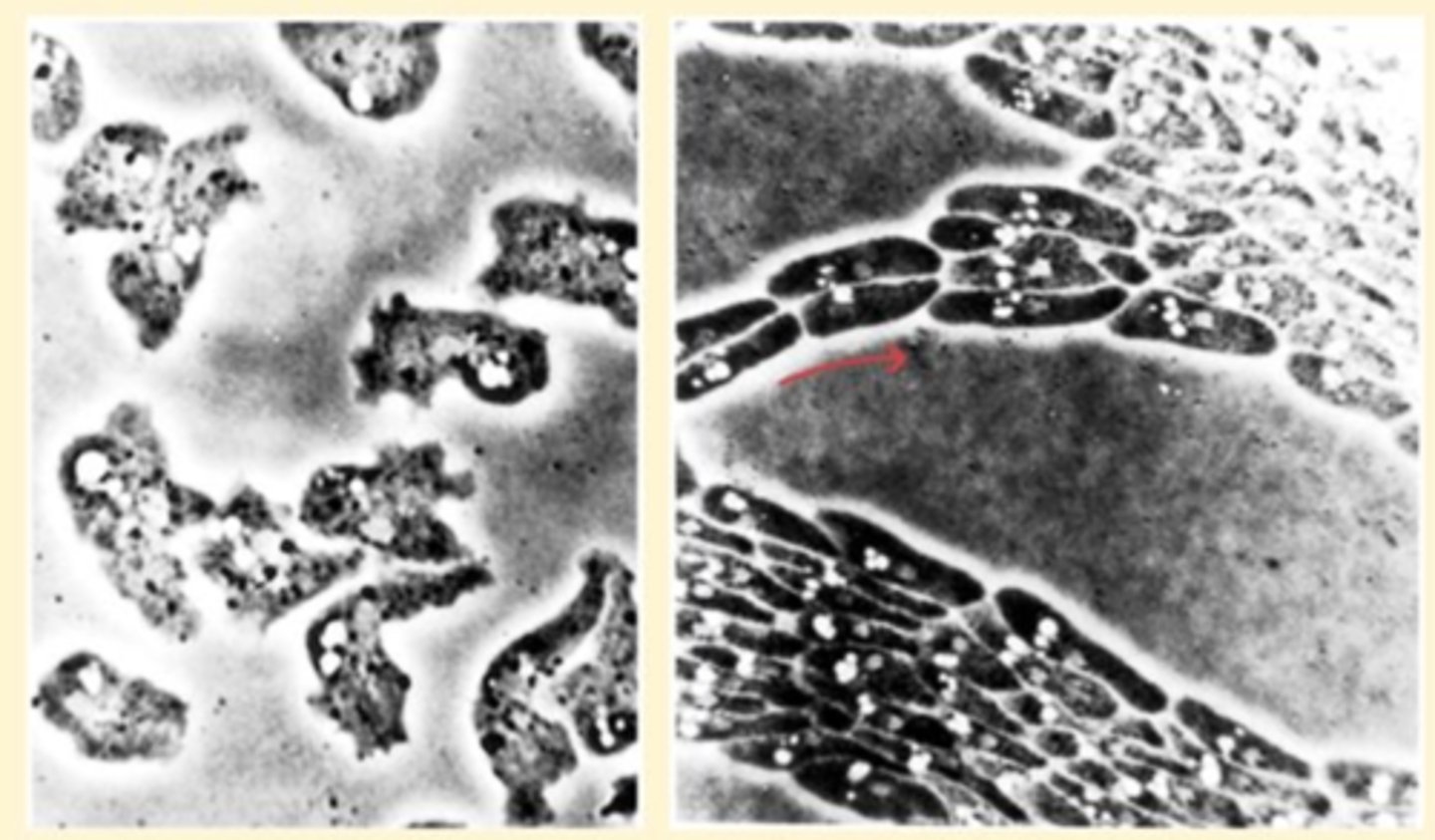
pseudoplasmodium
a slightly motile aggregation of cells (slug) that produces fruiting bodies, which in turn produce spores; cells aggregate via AMP hormone
